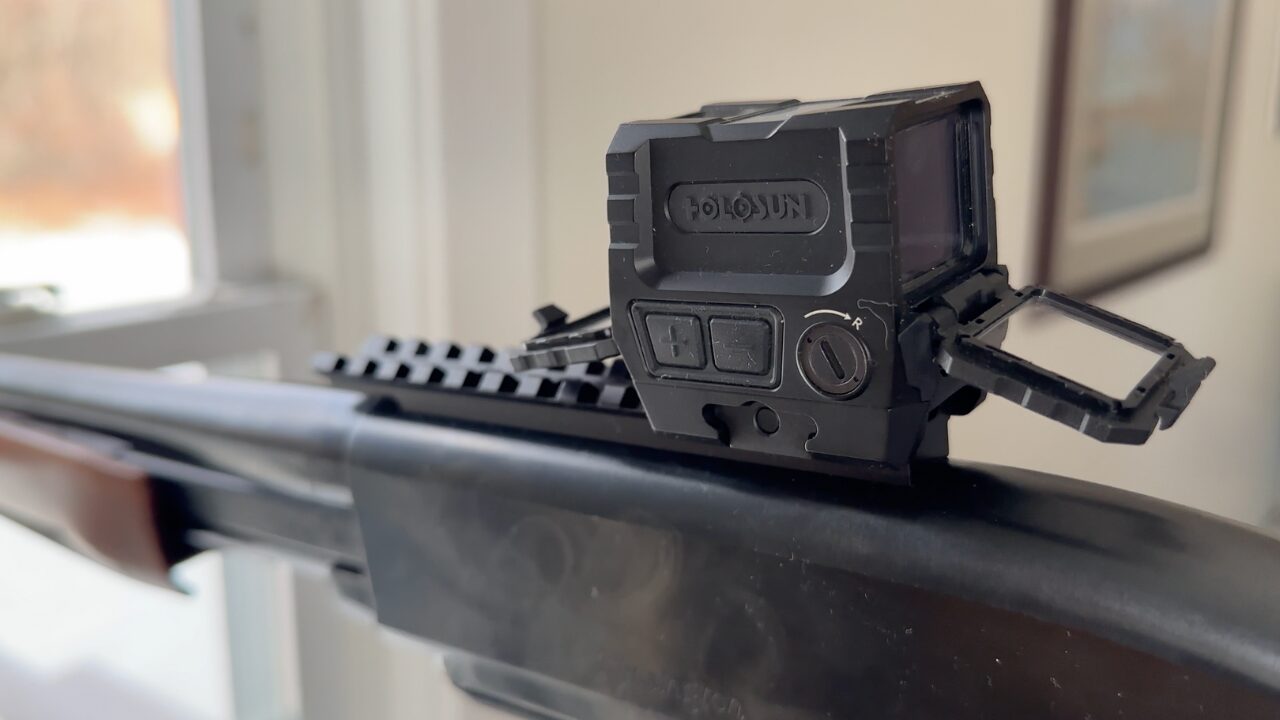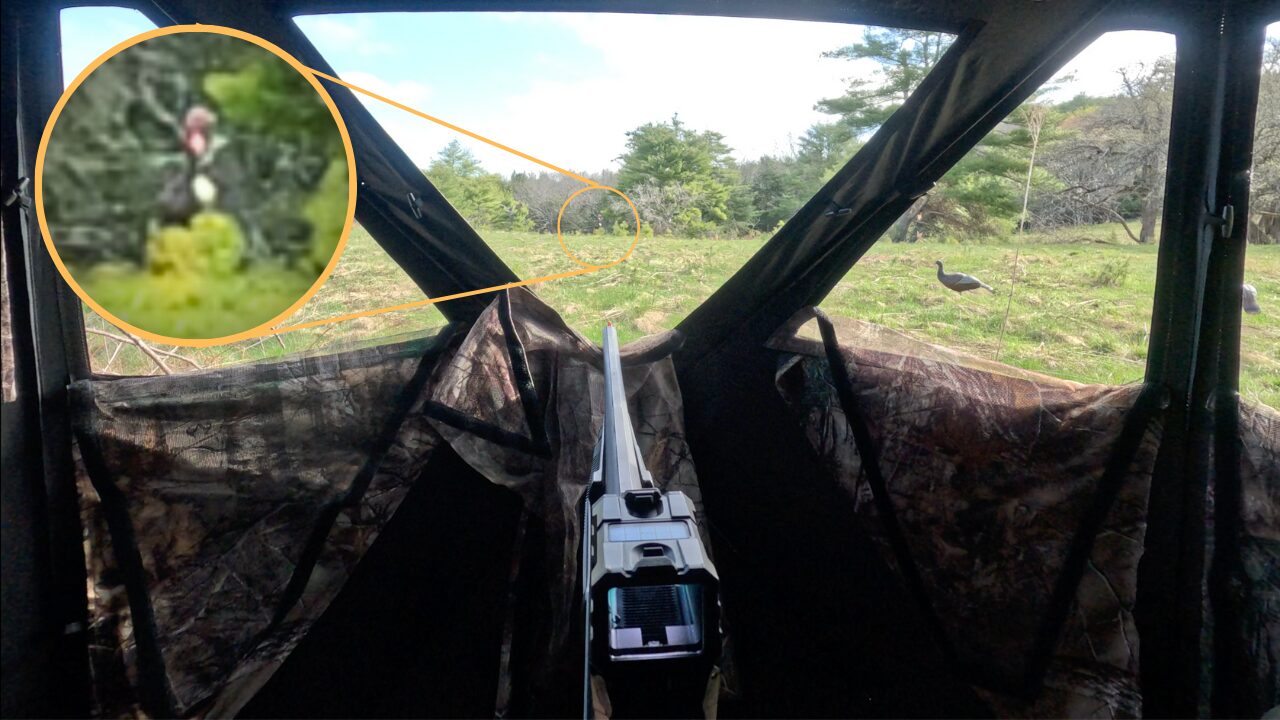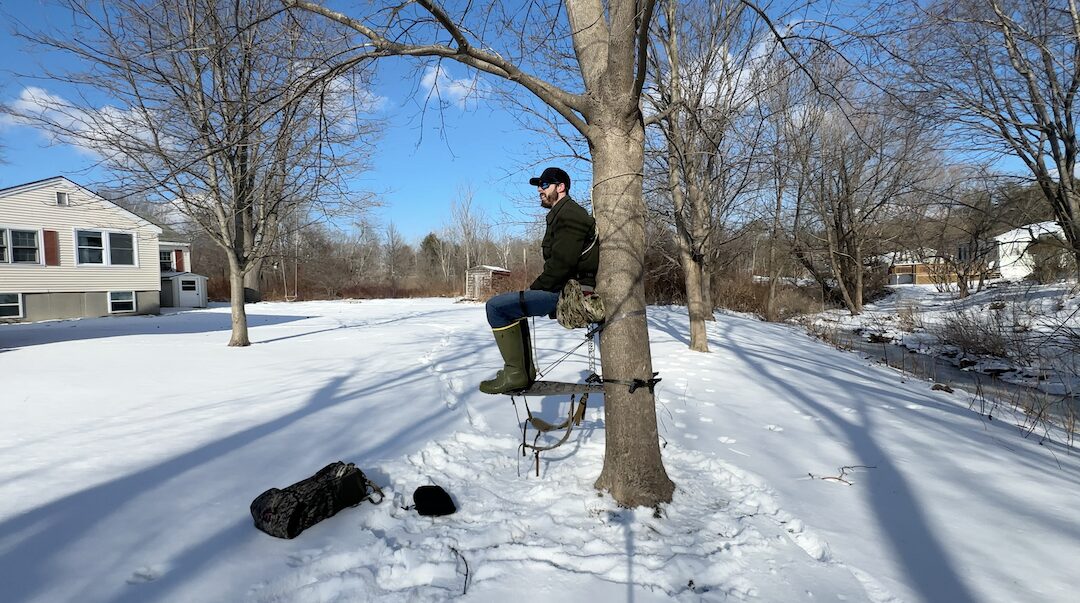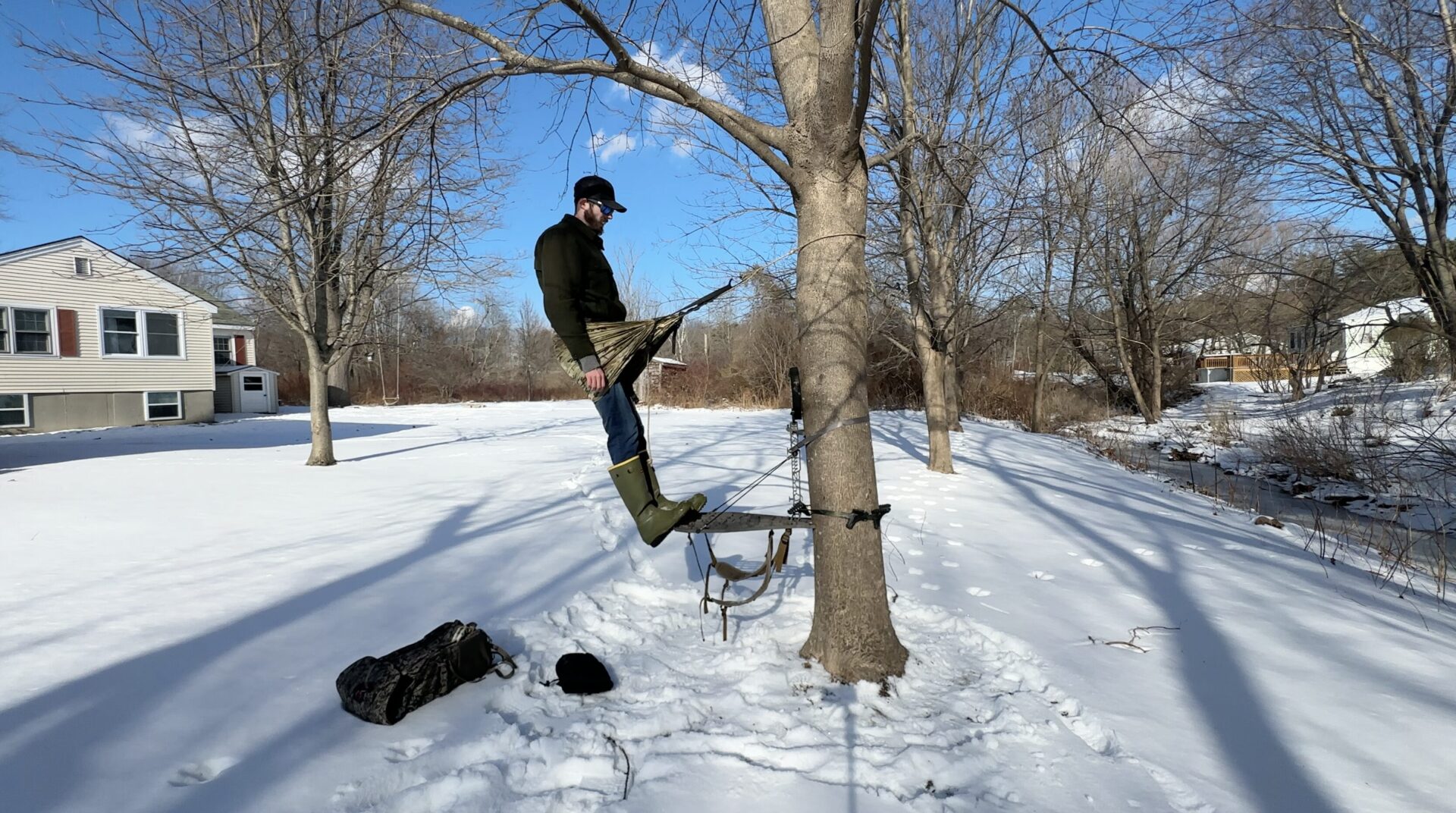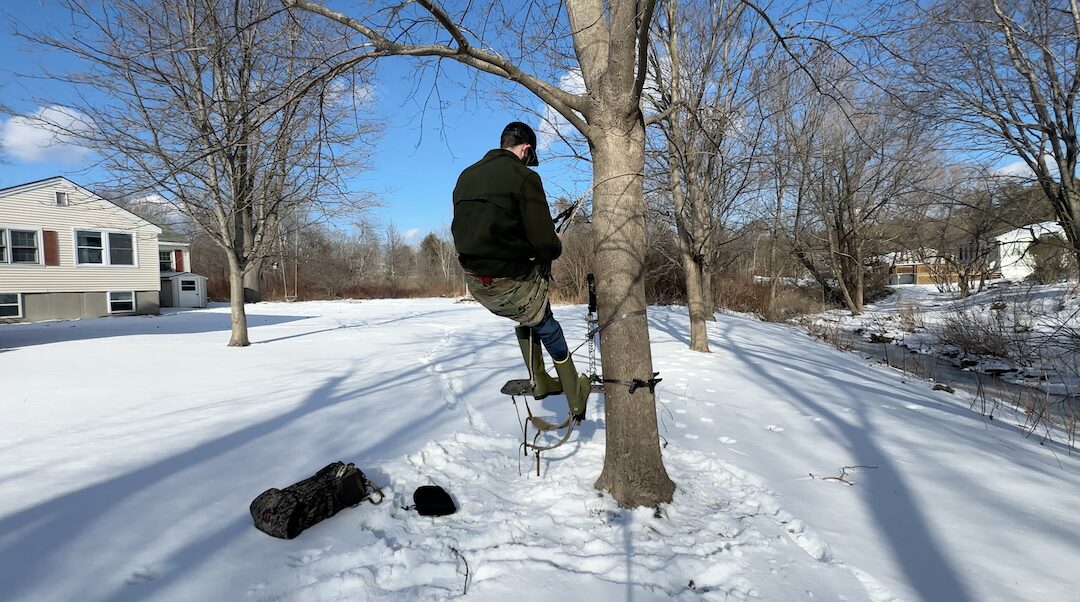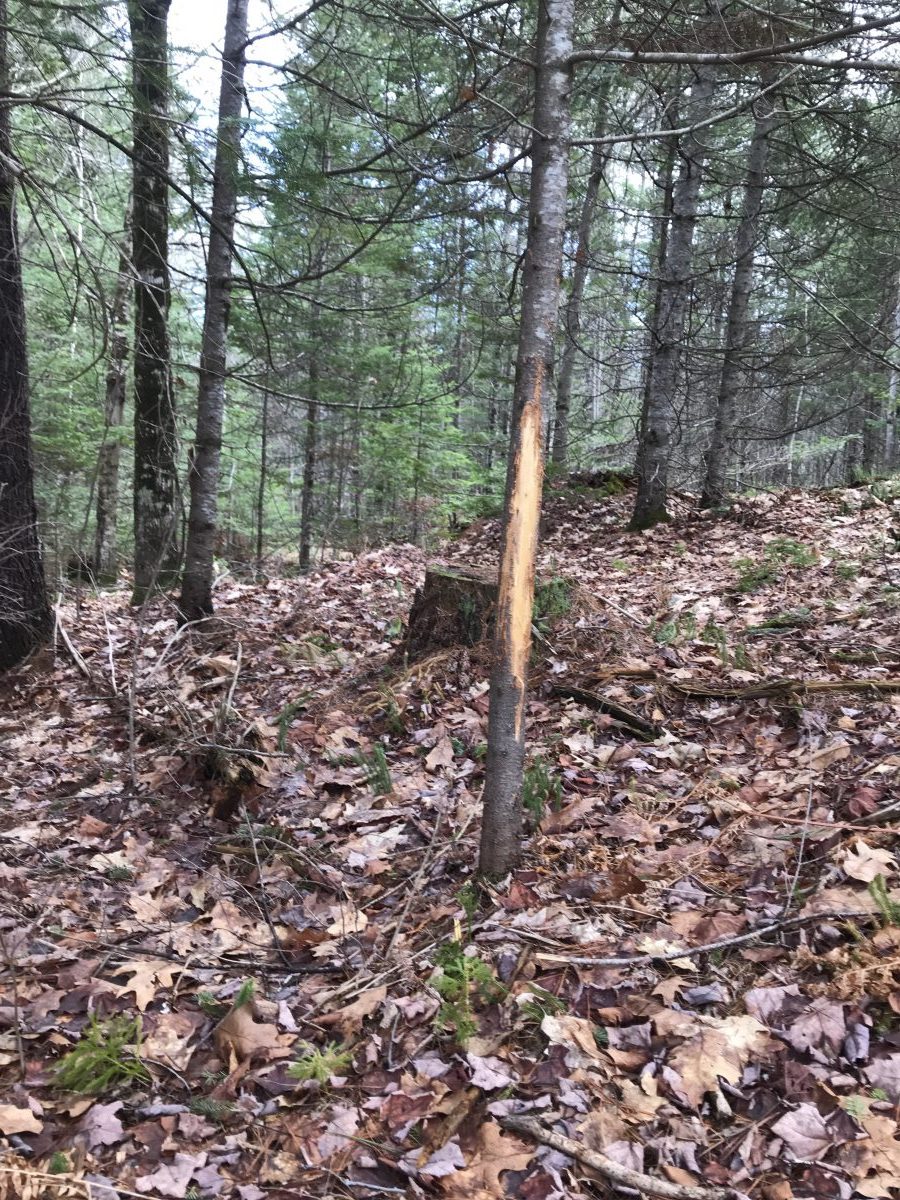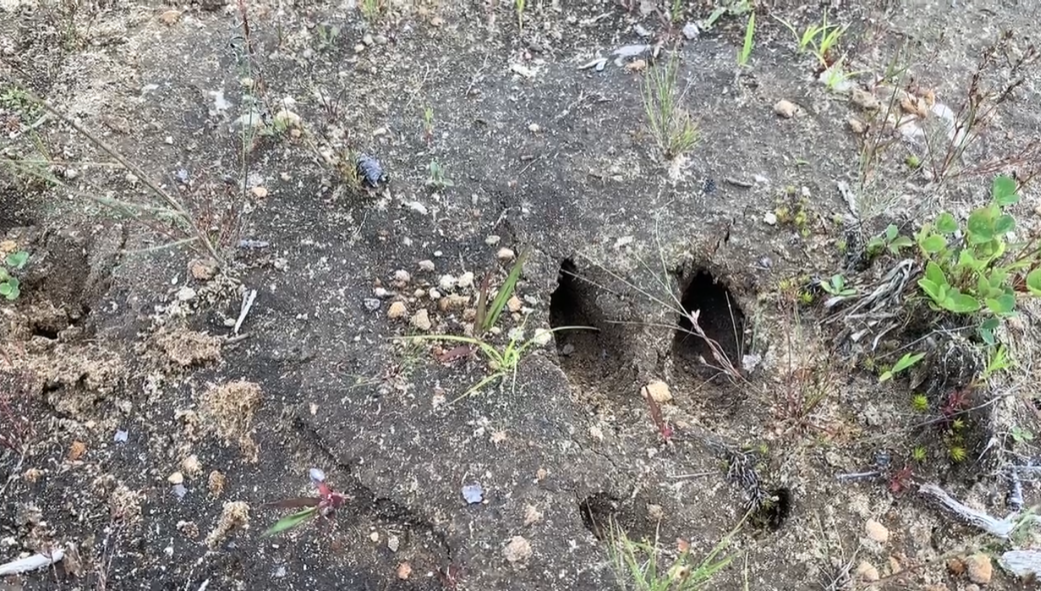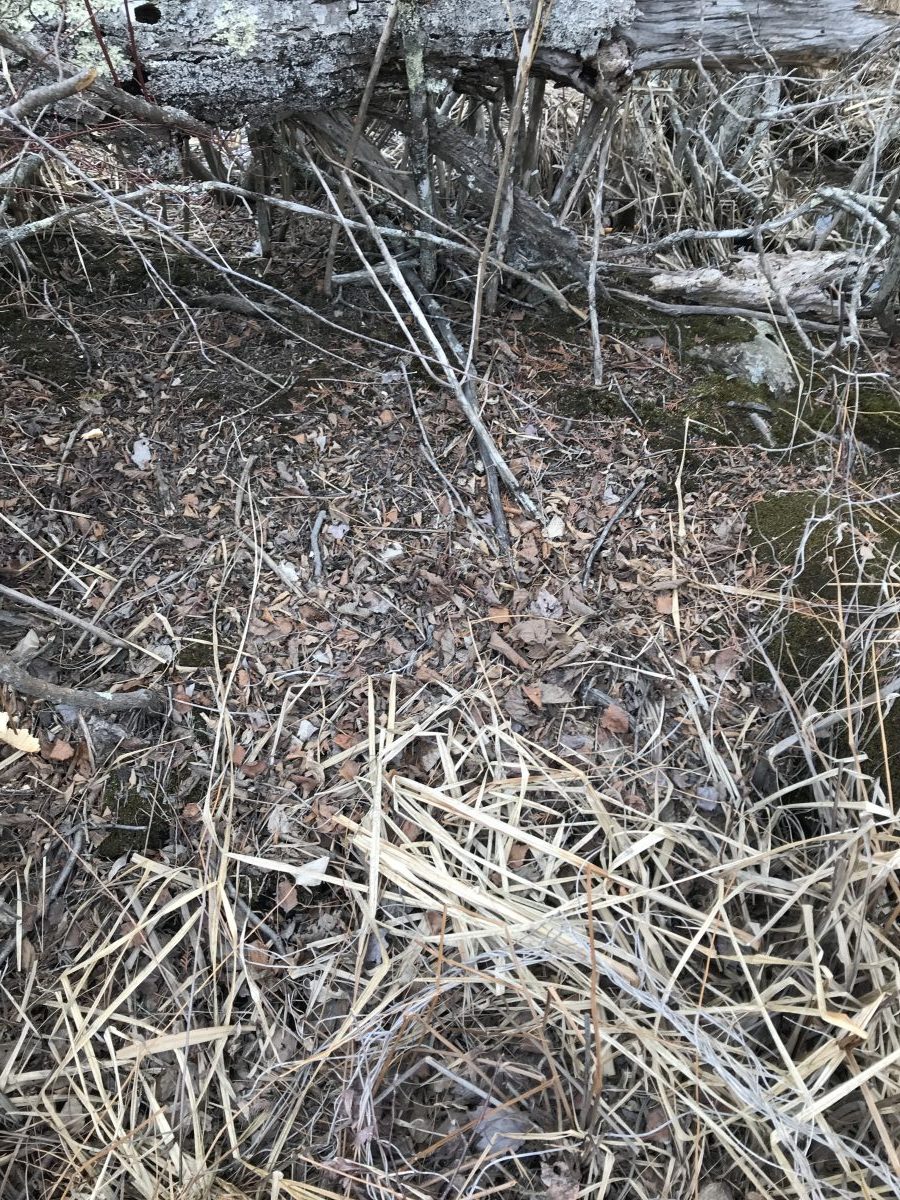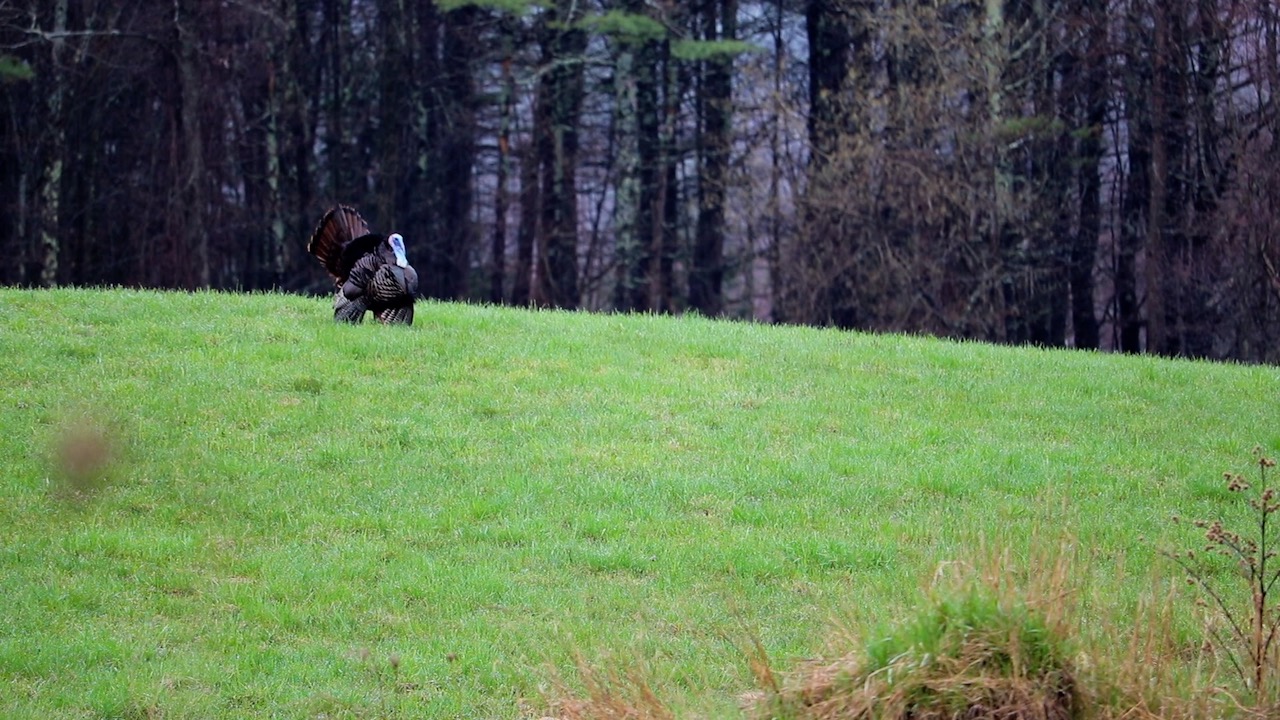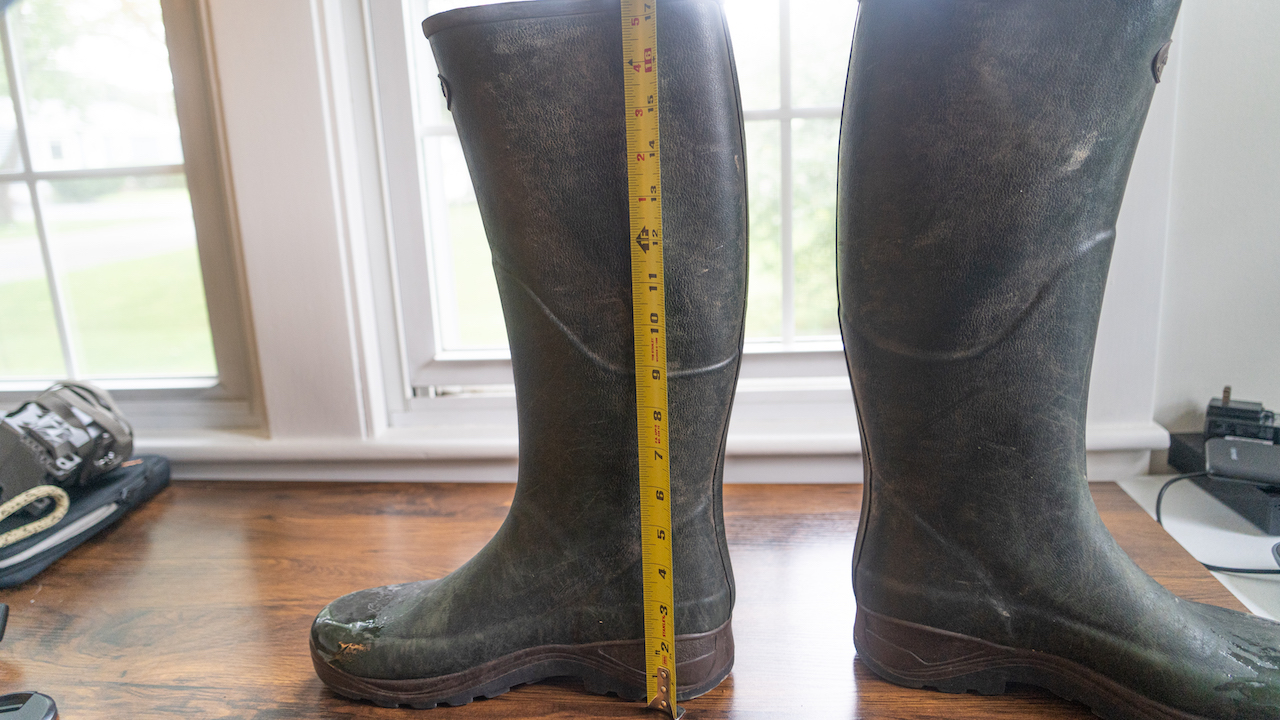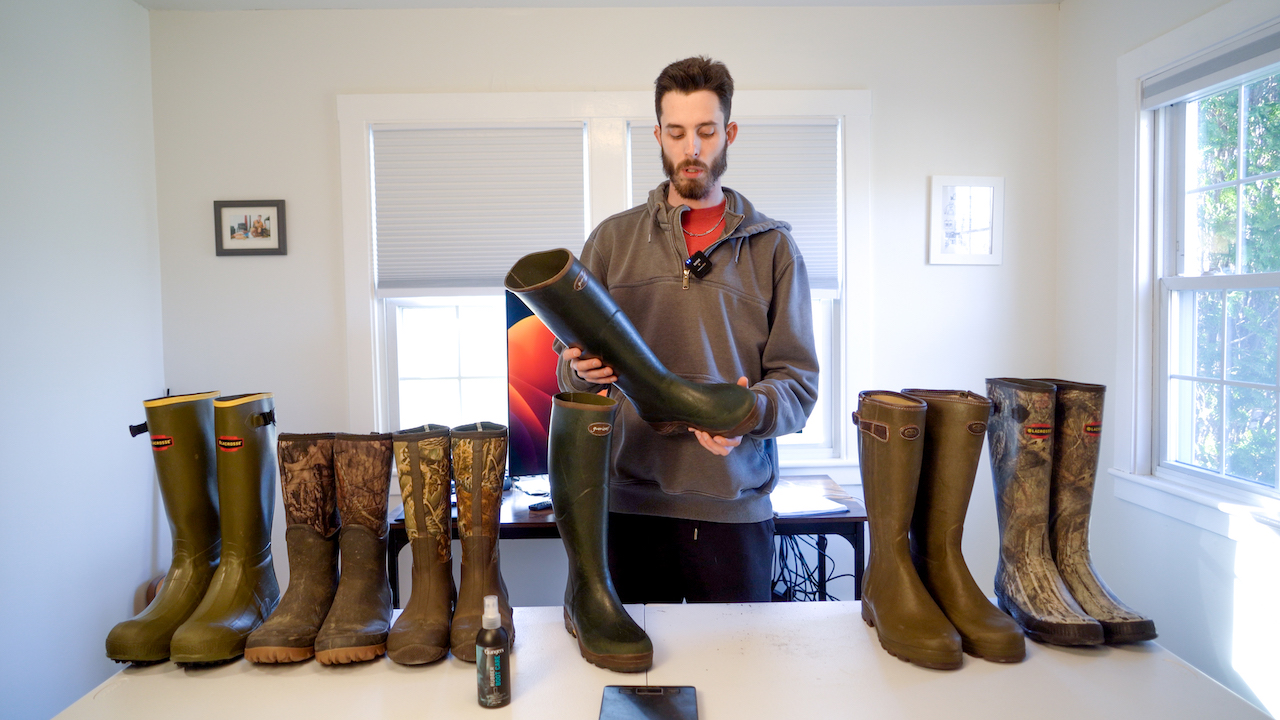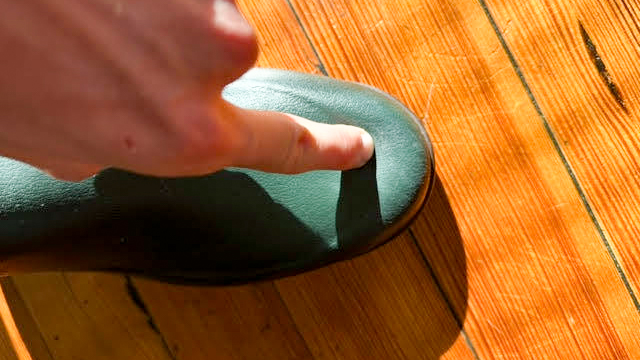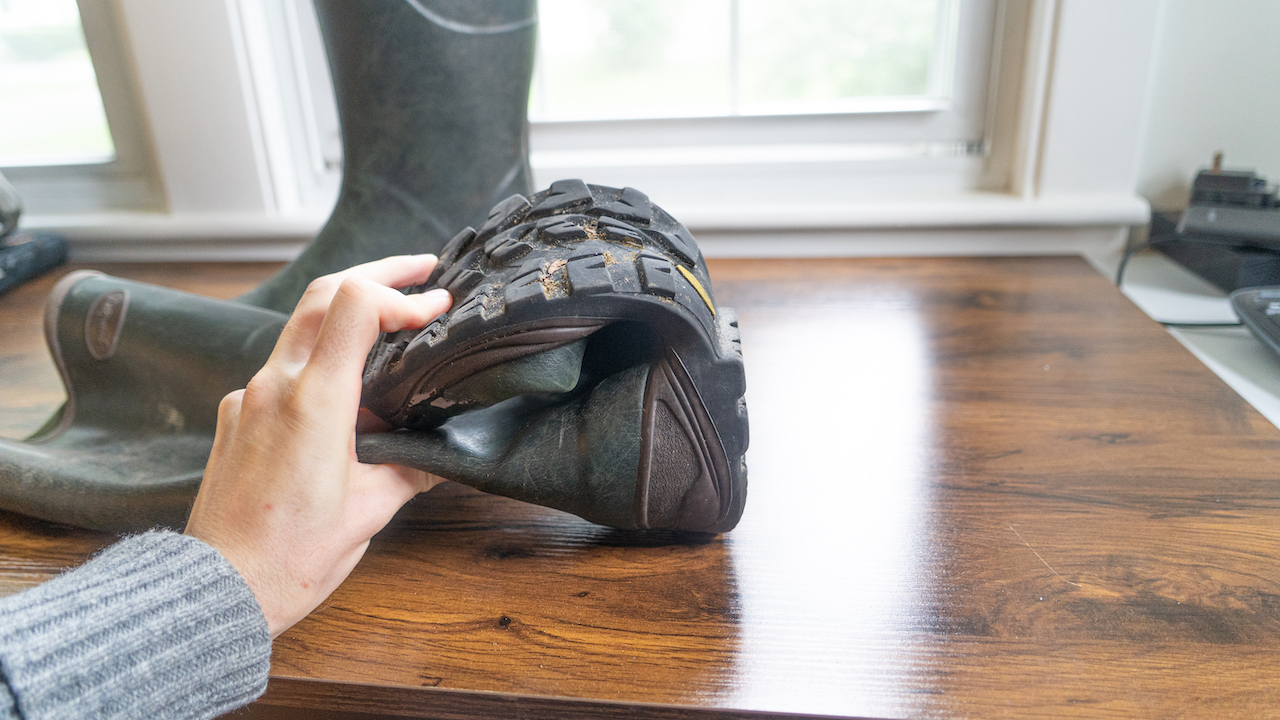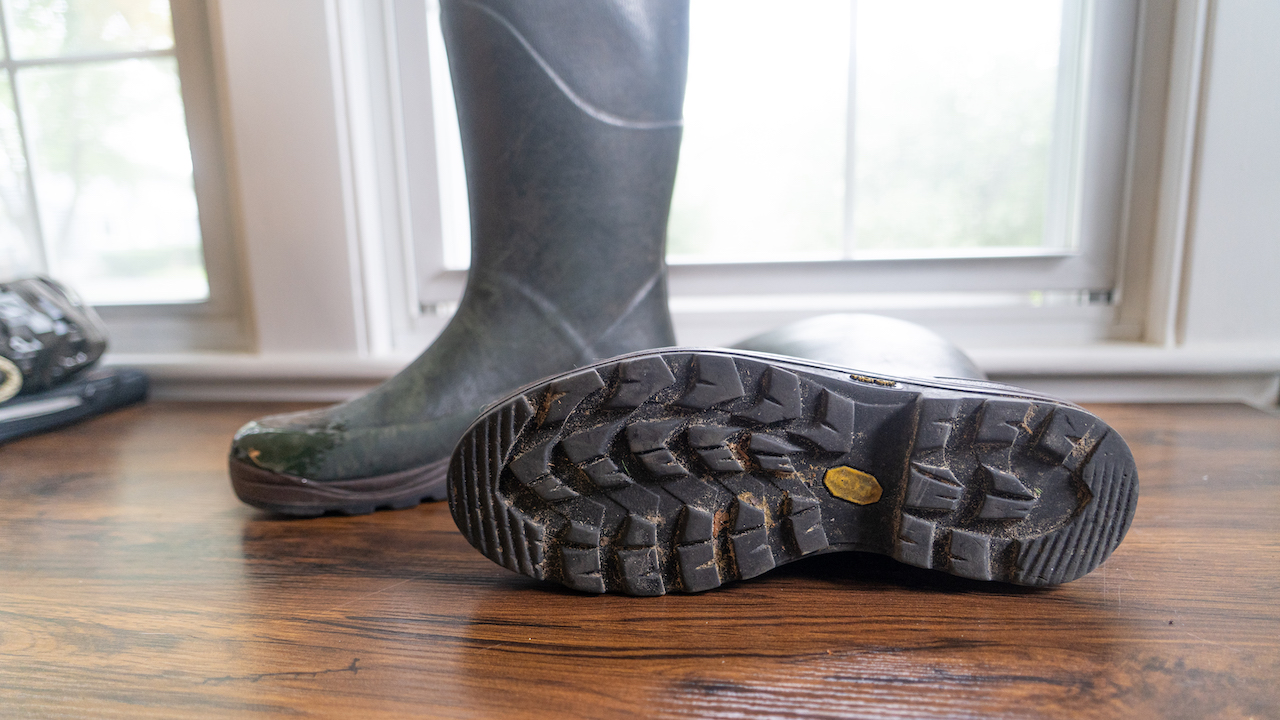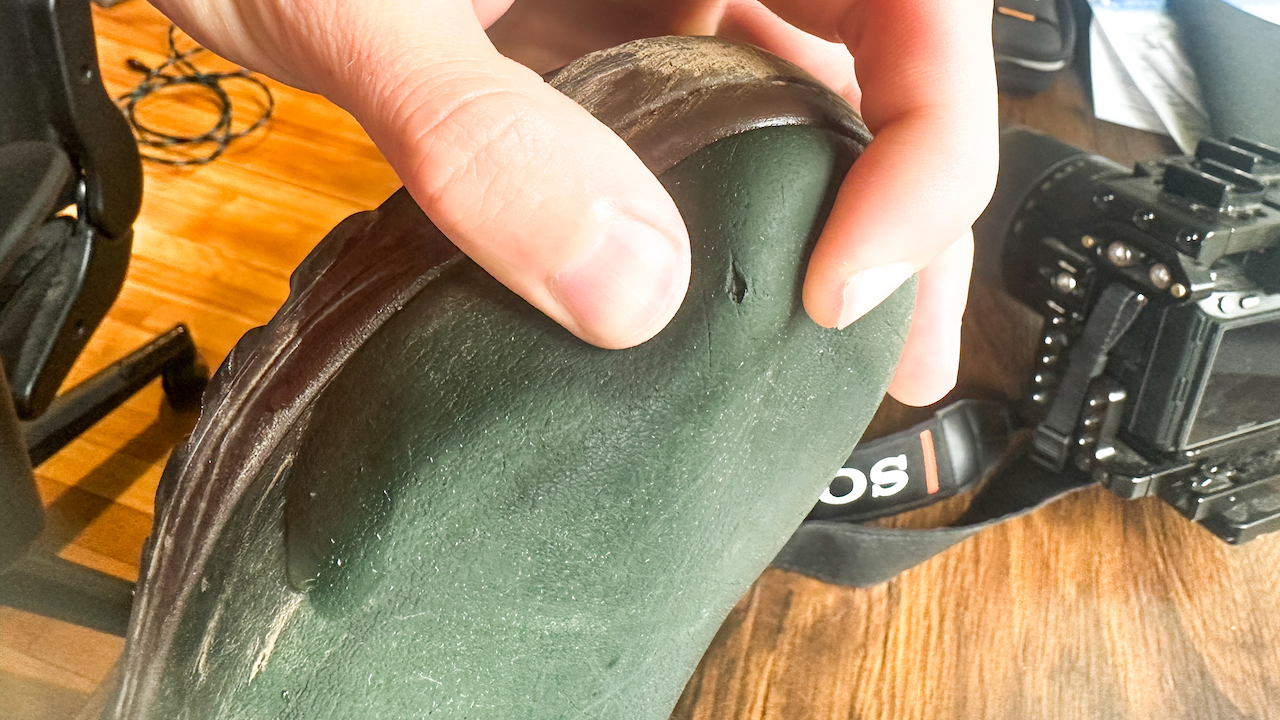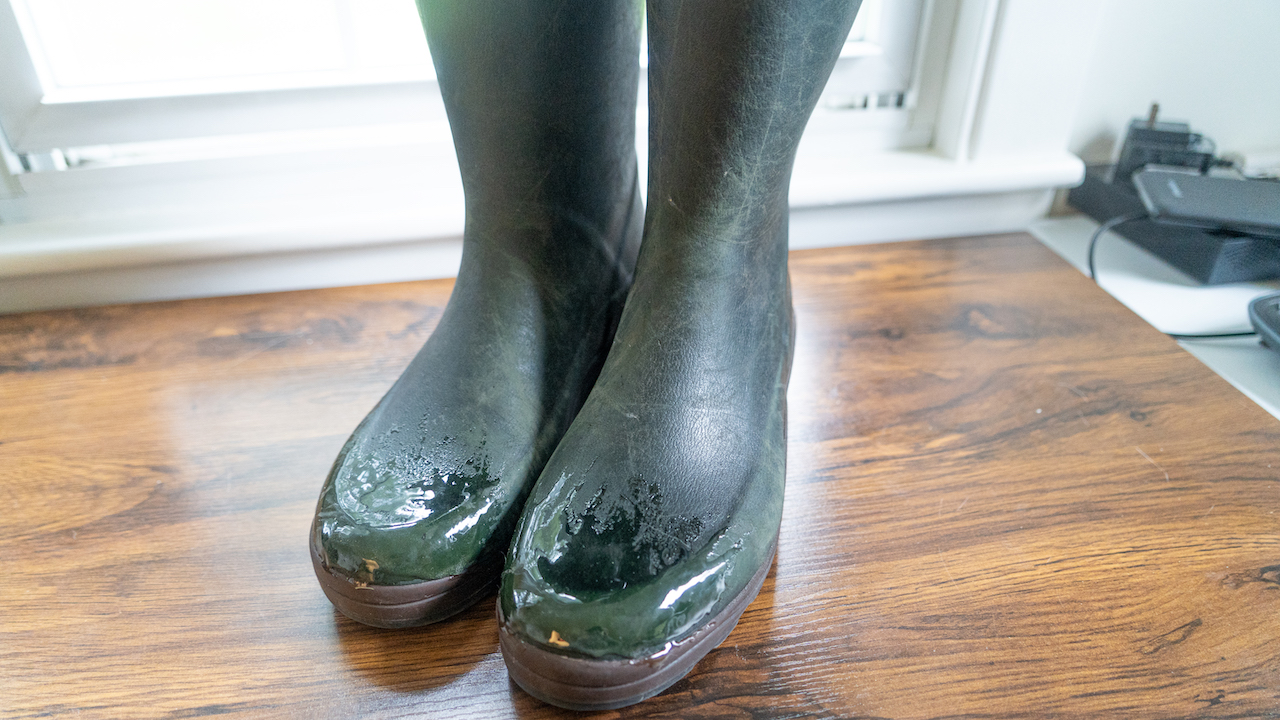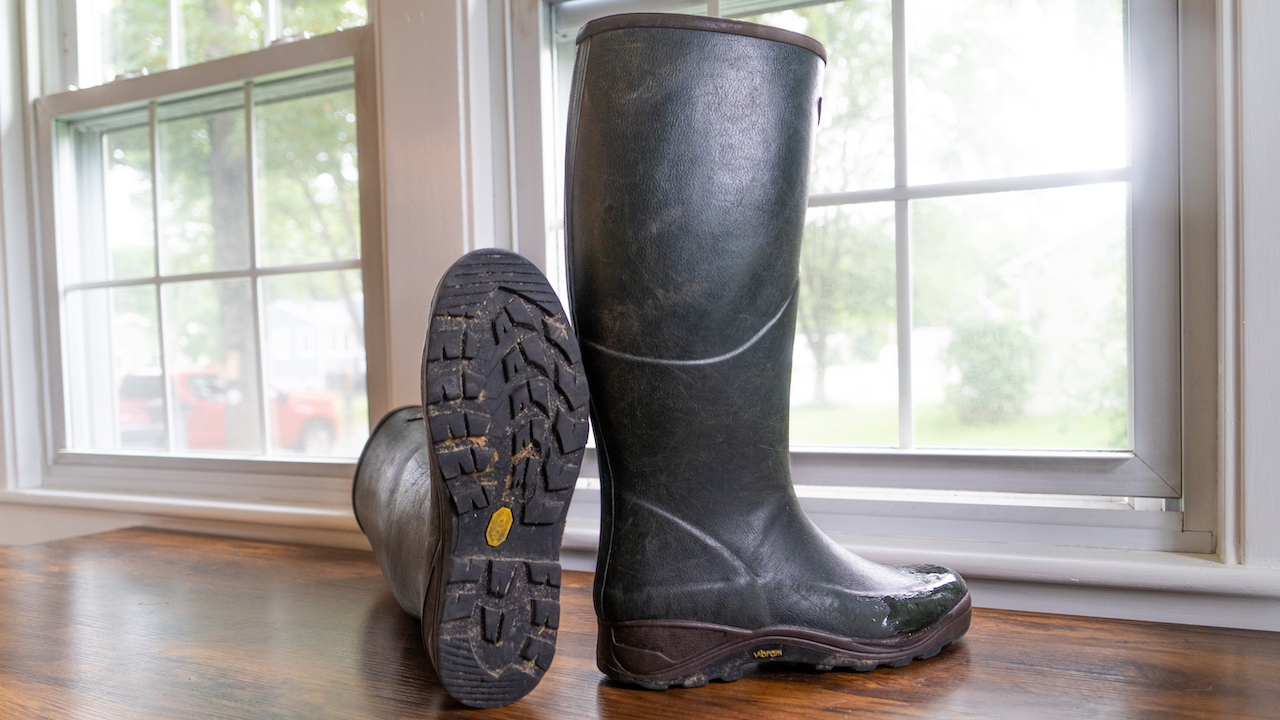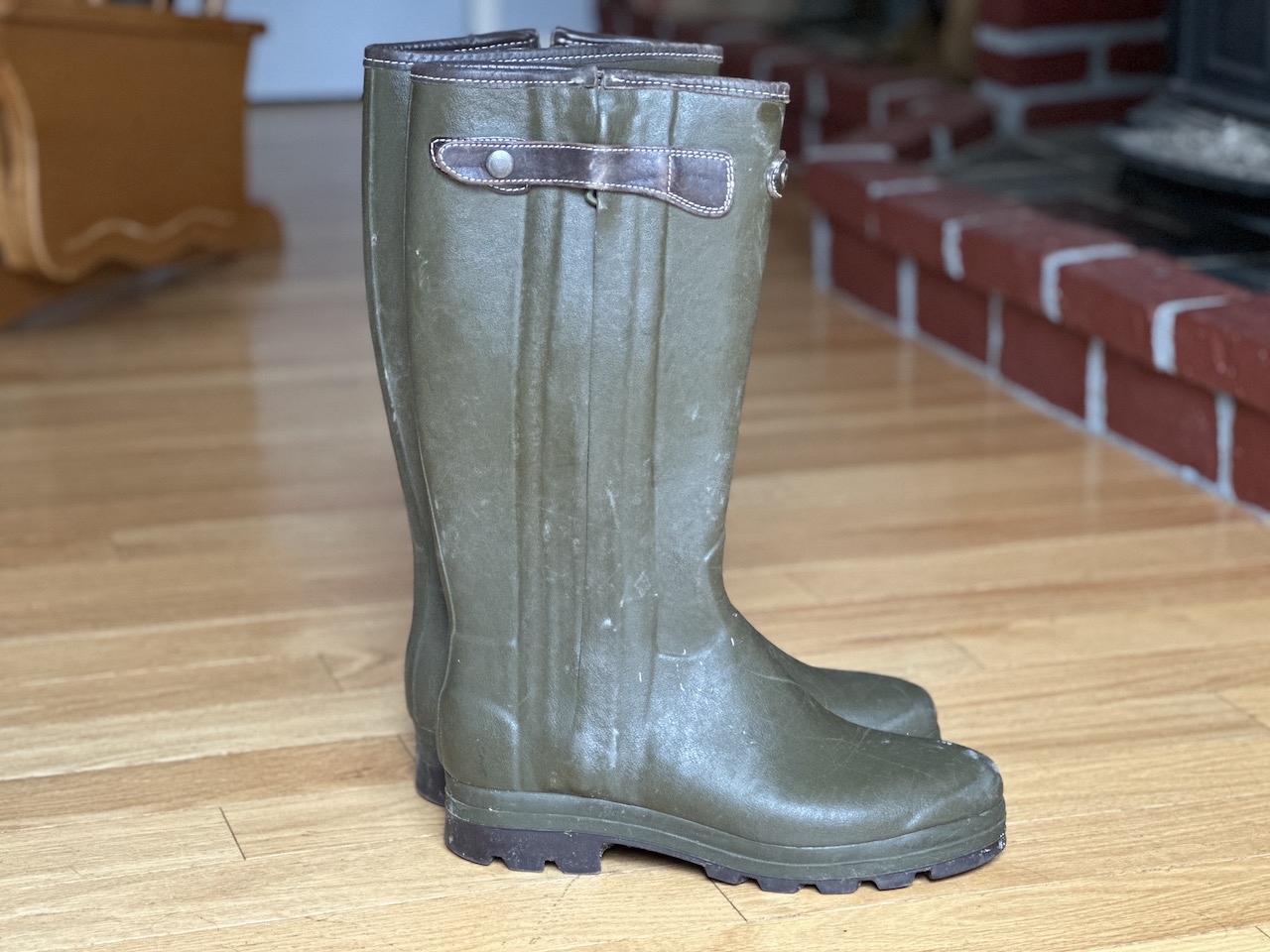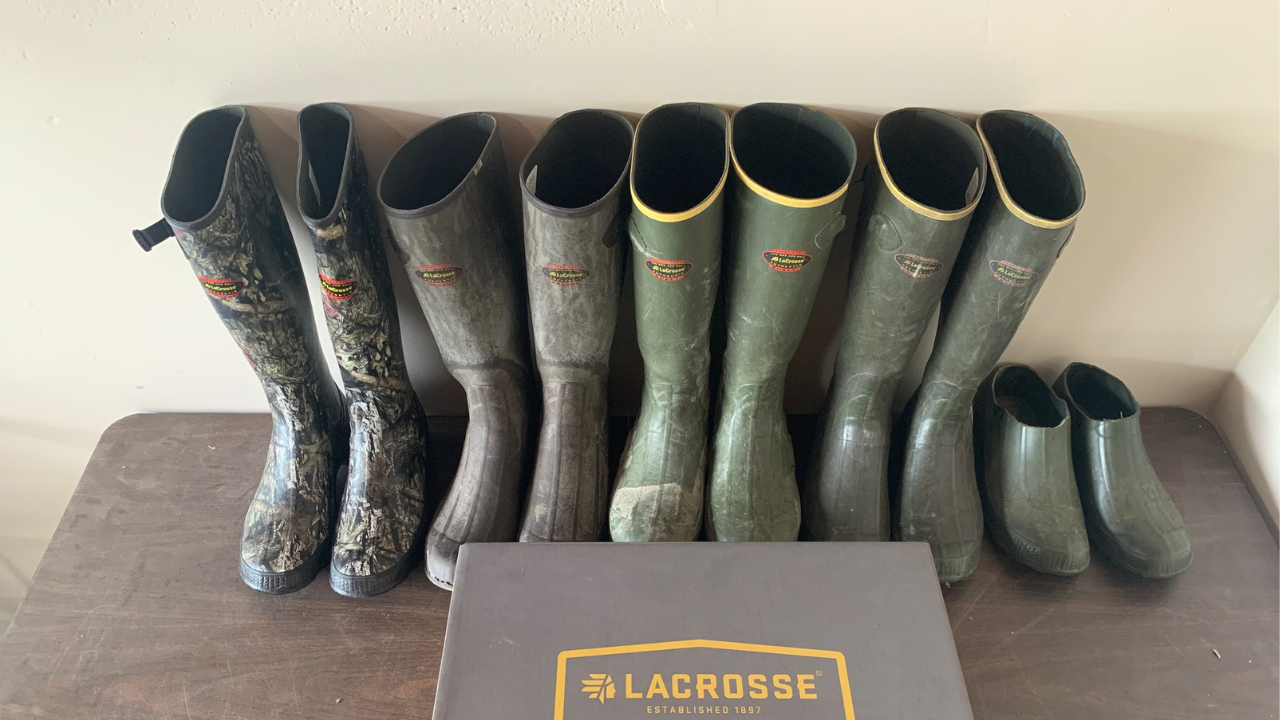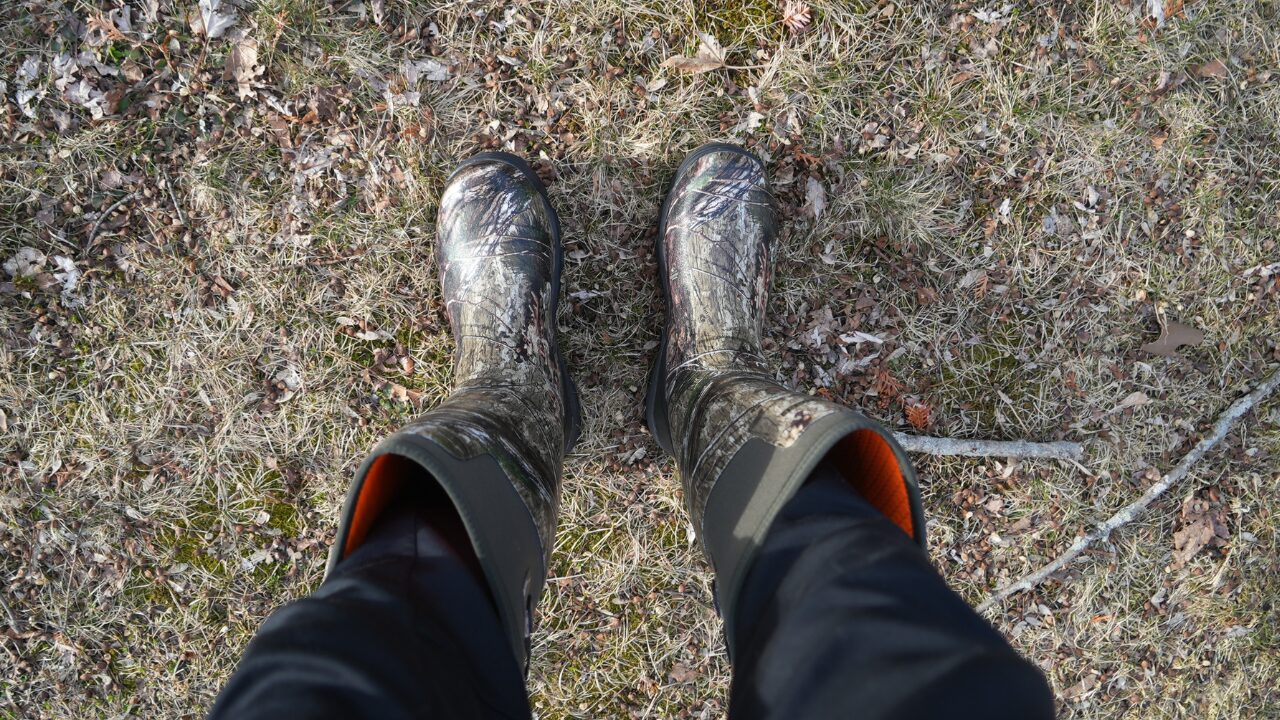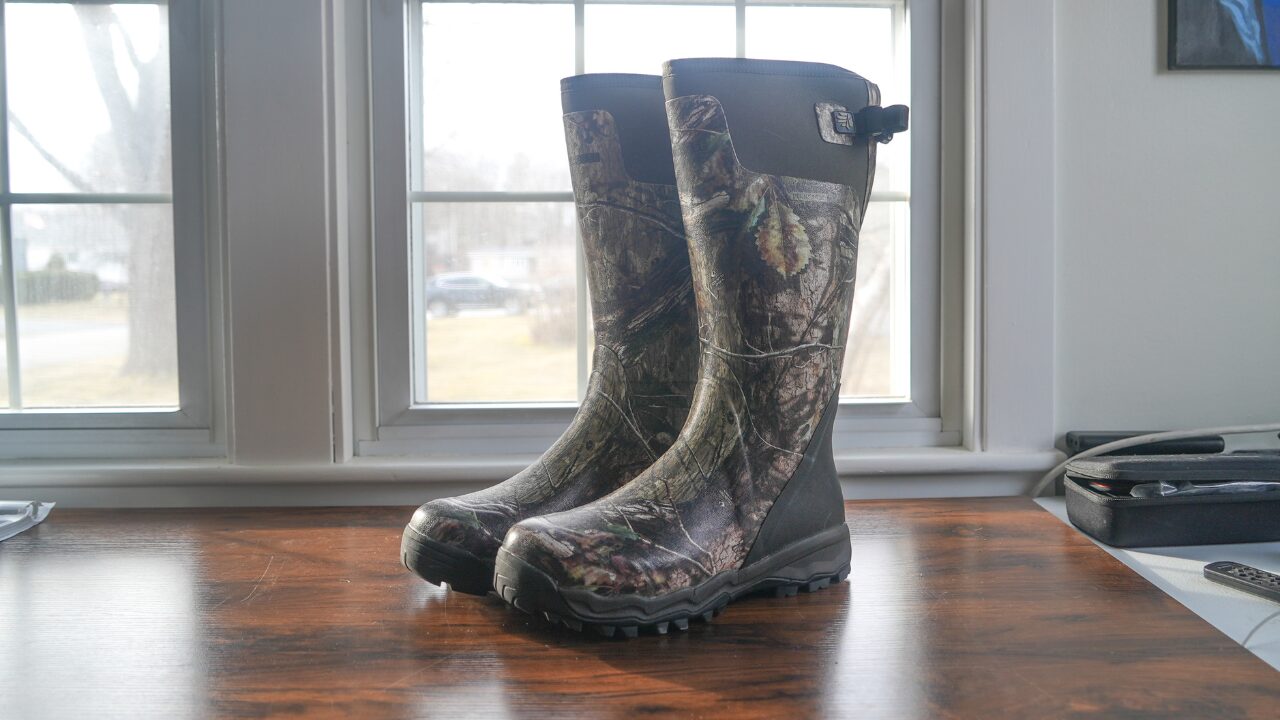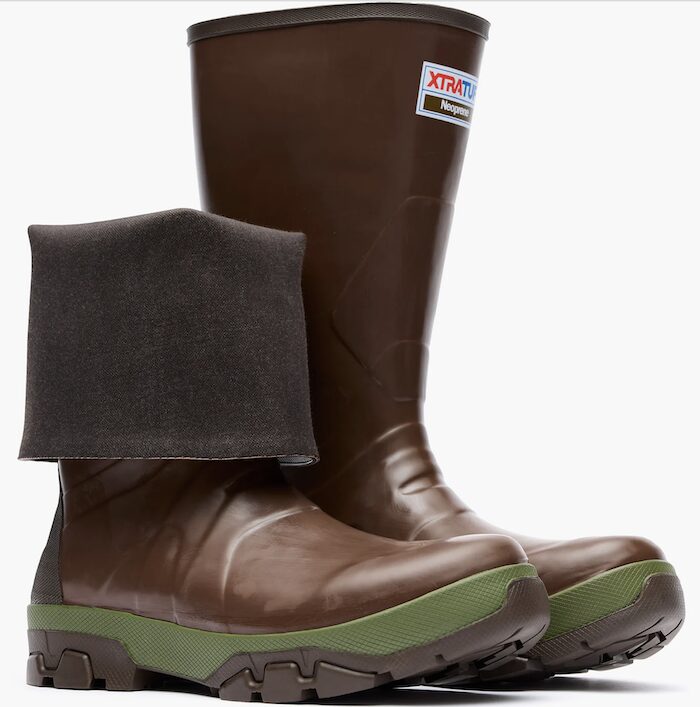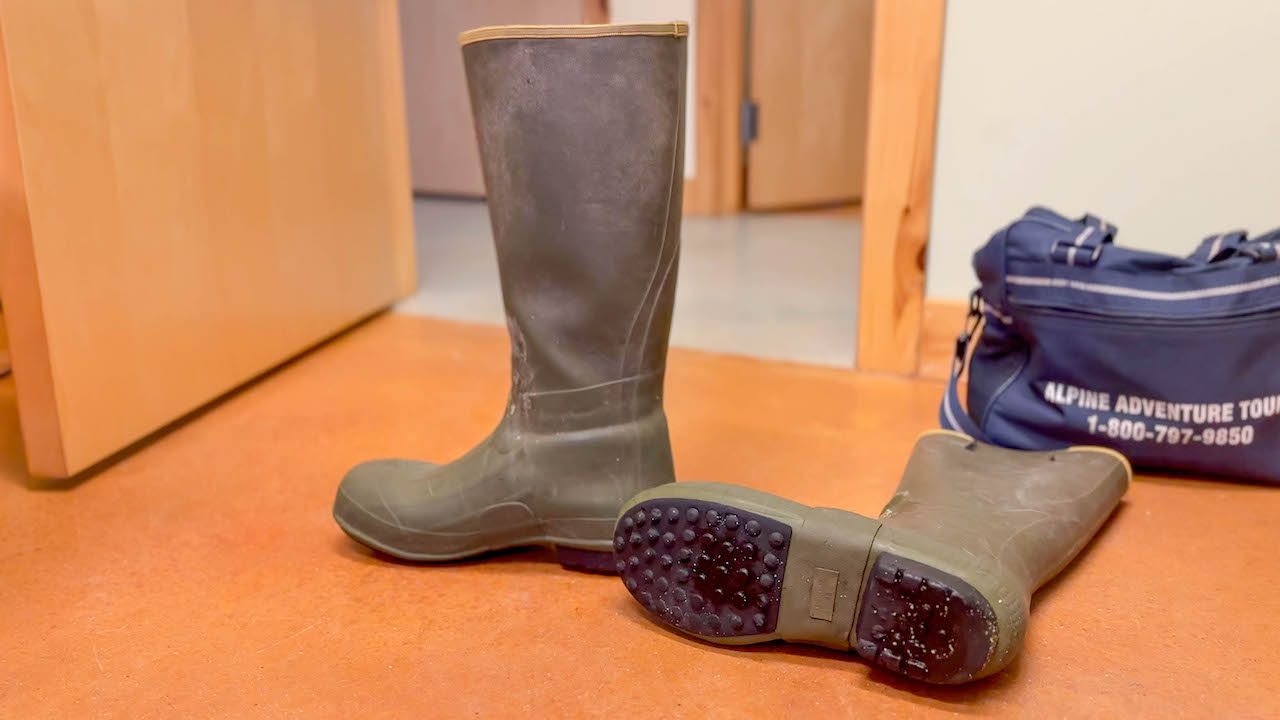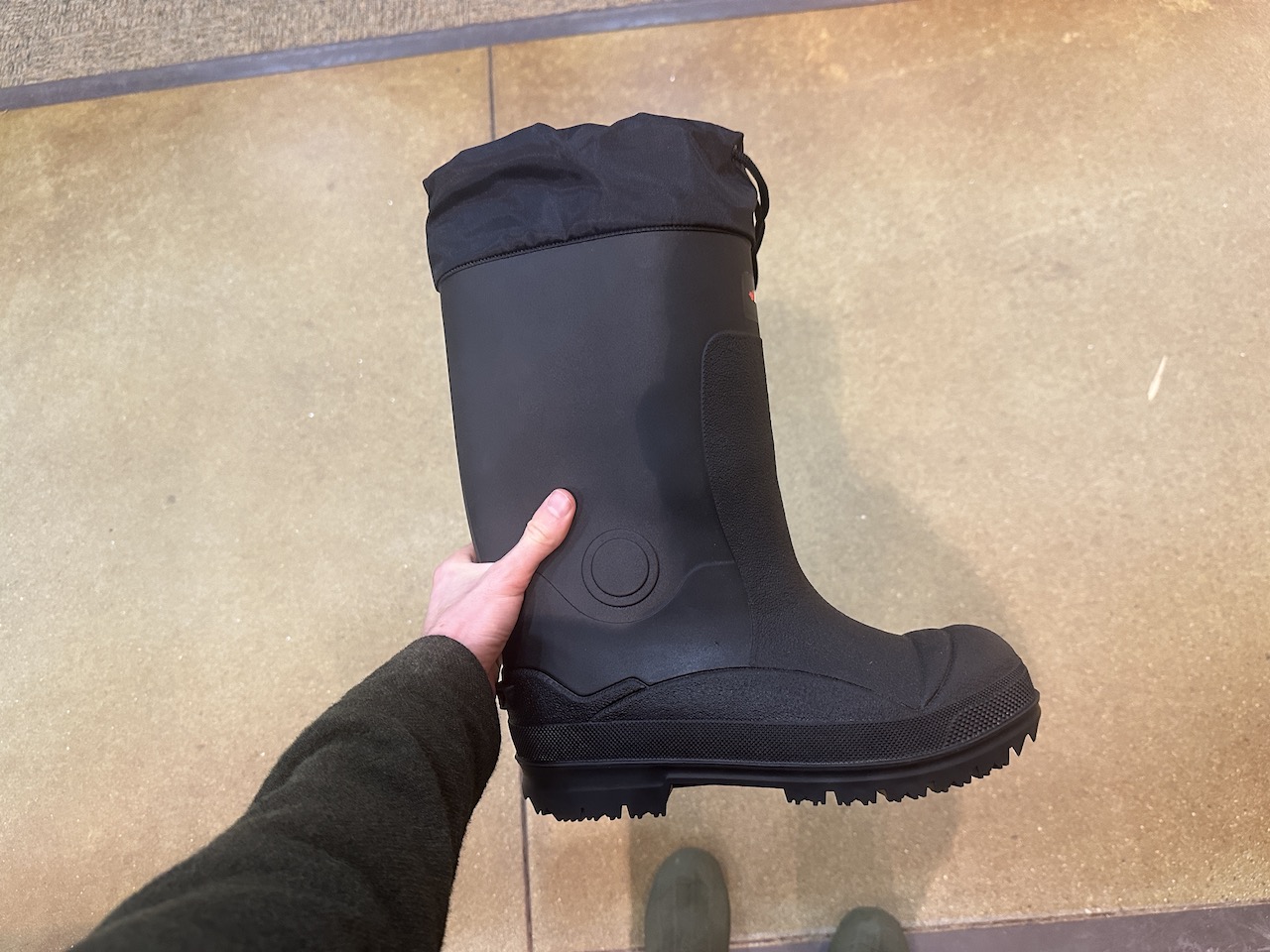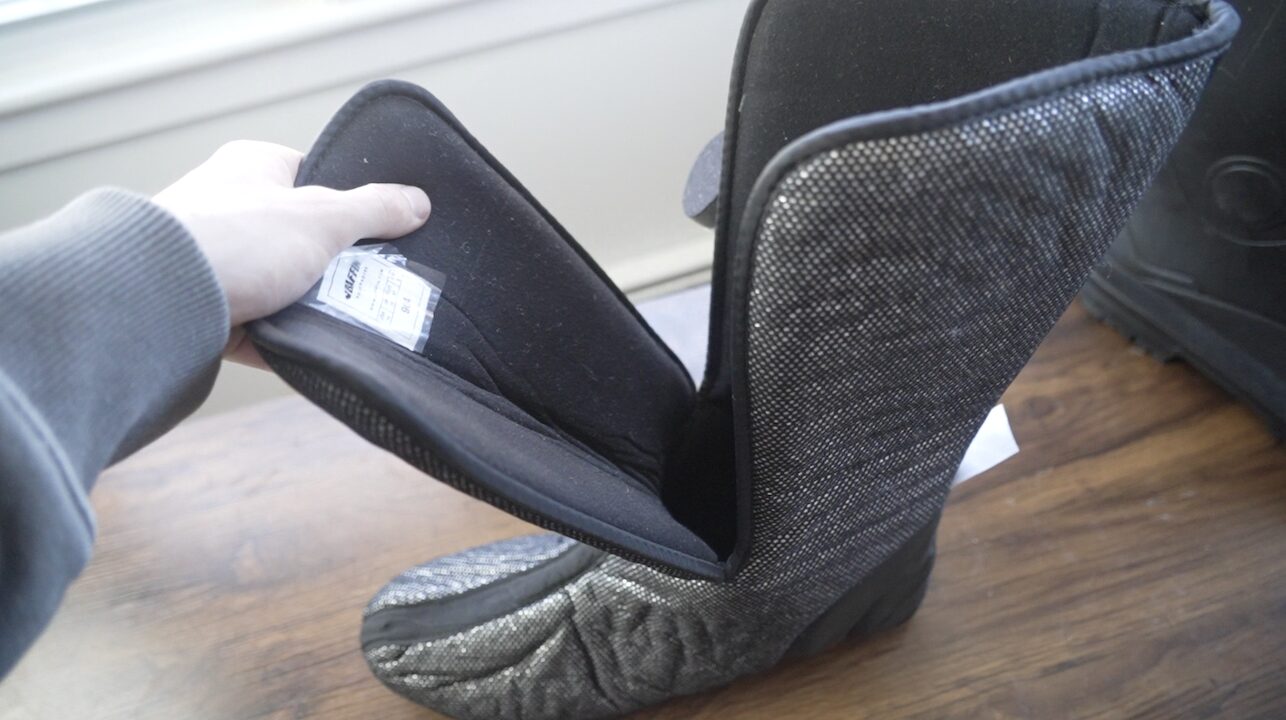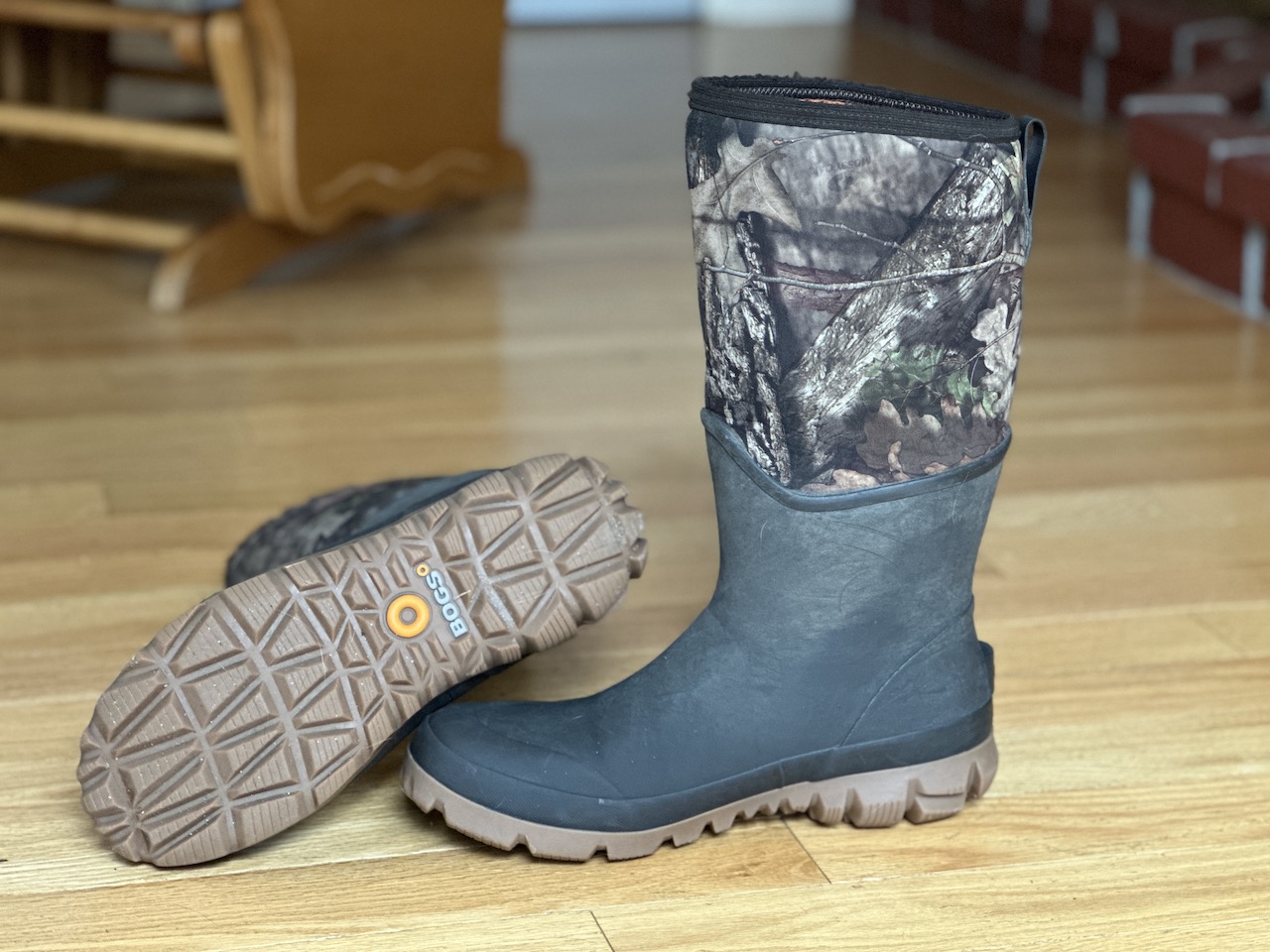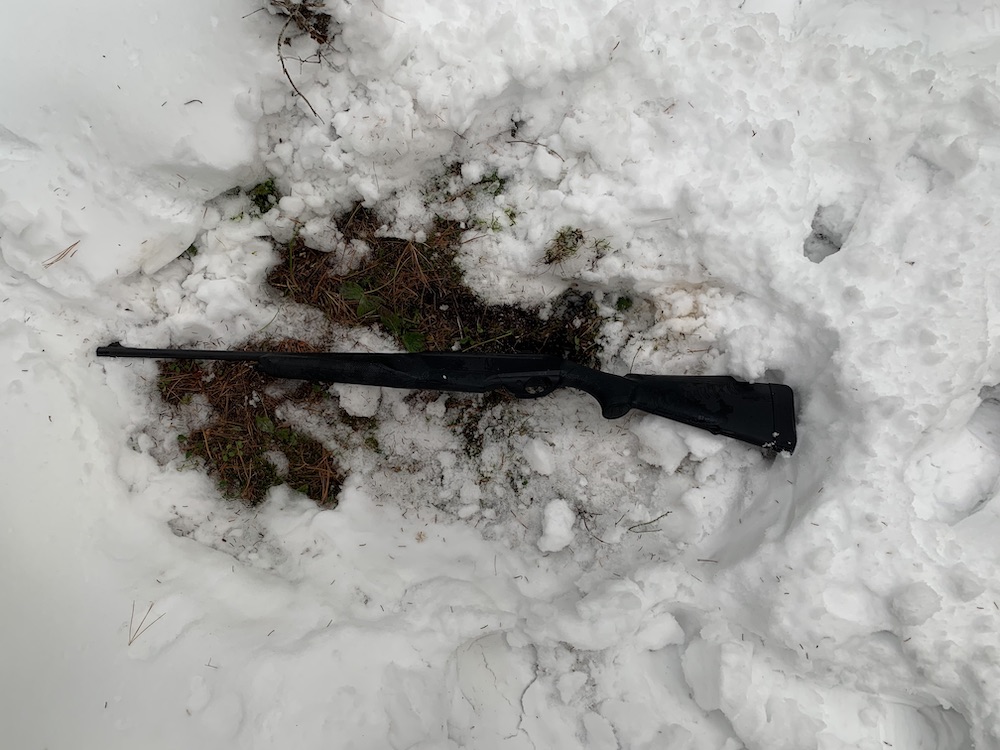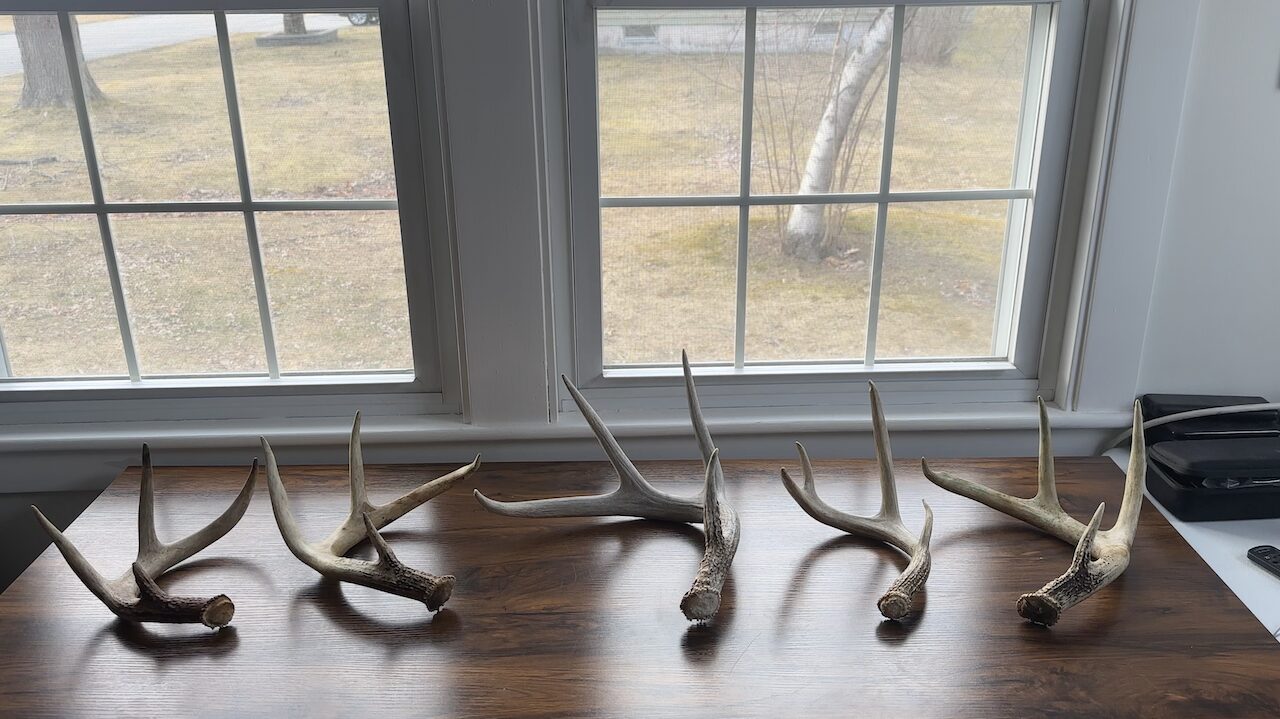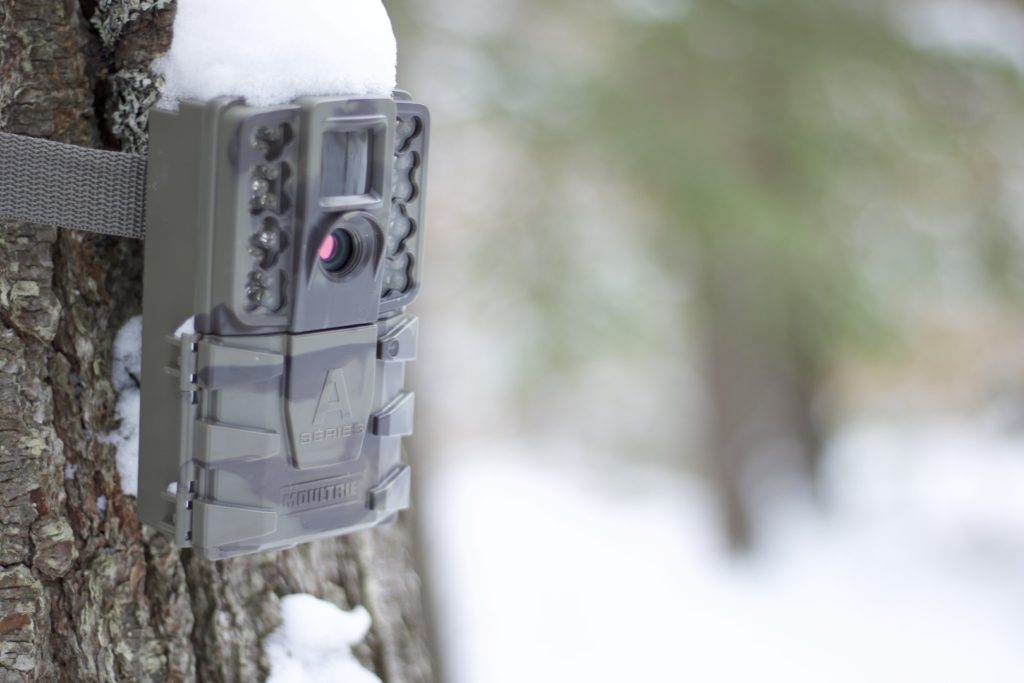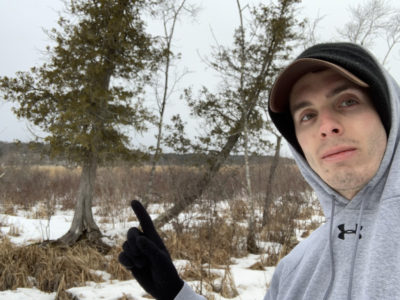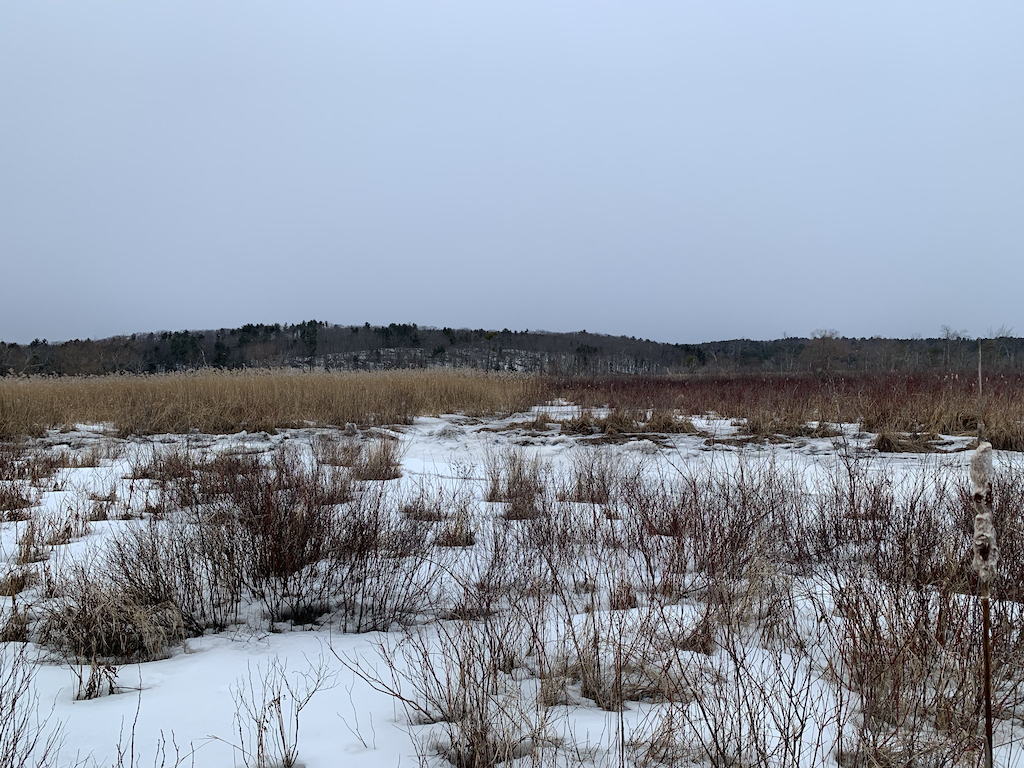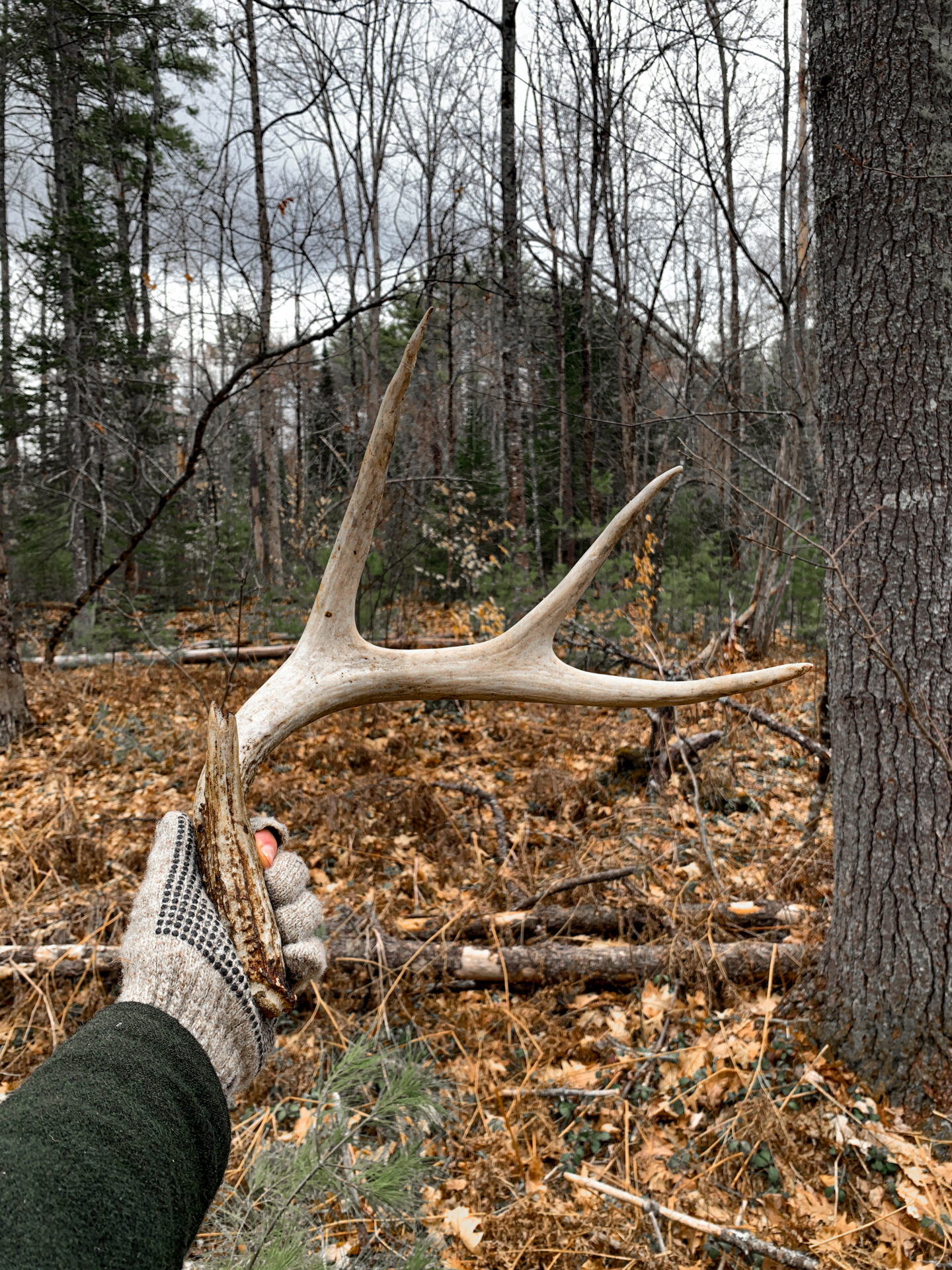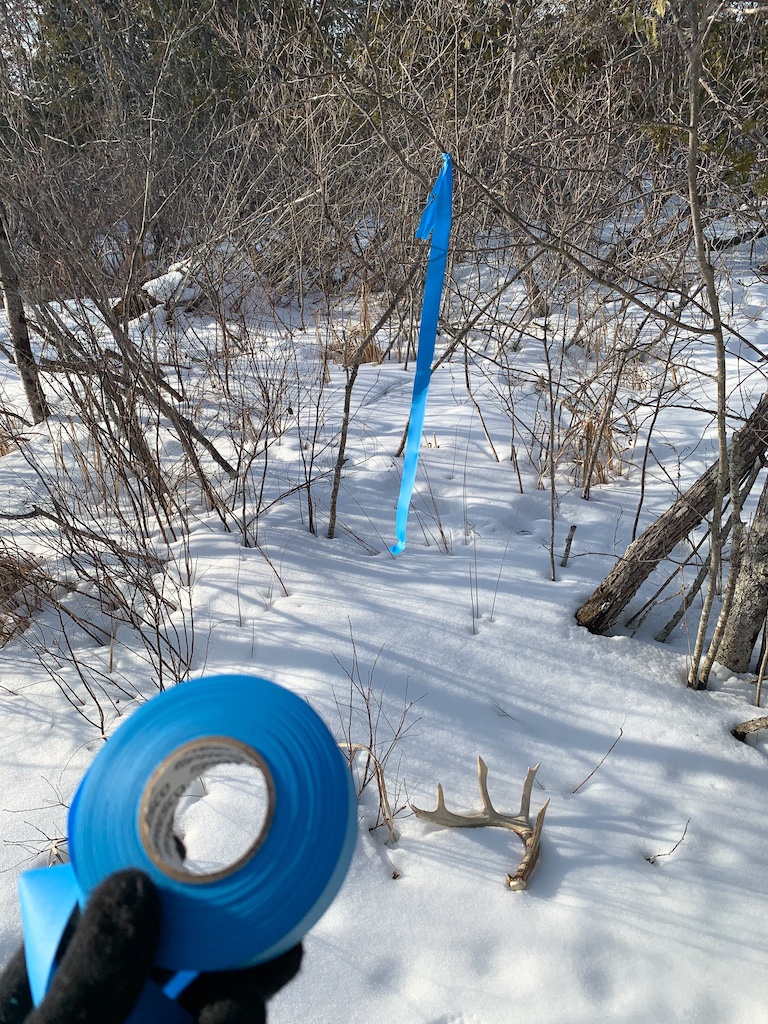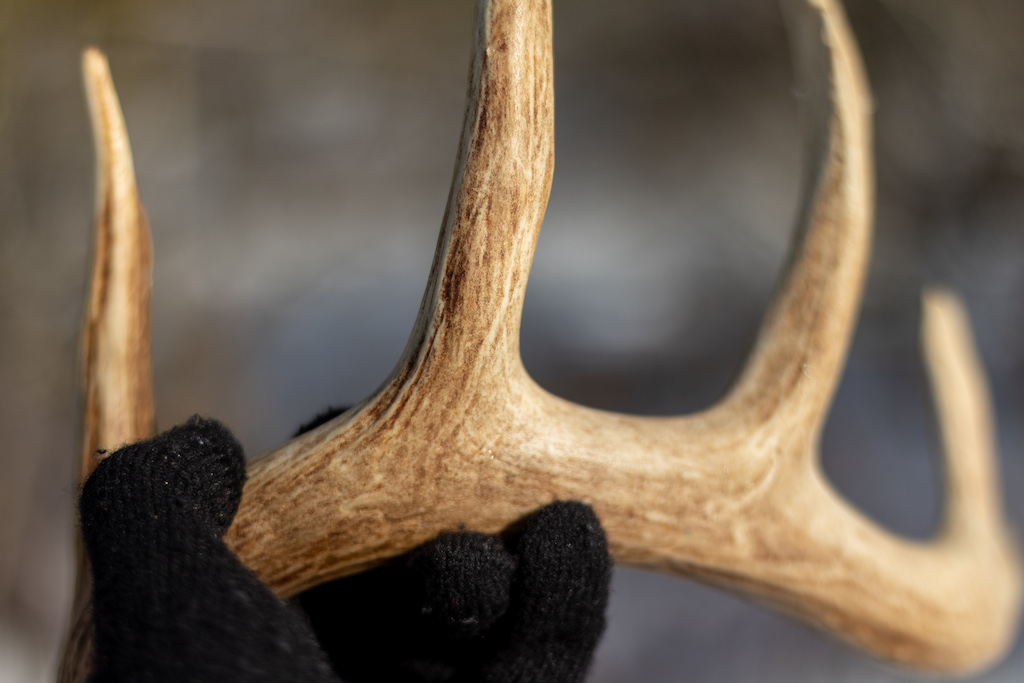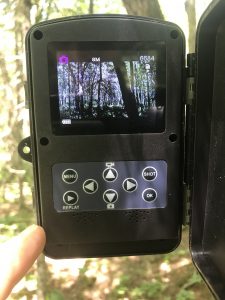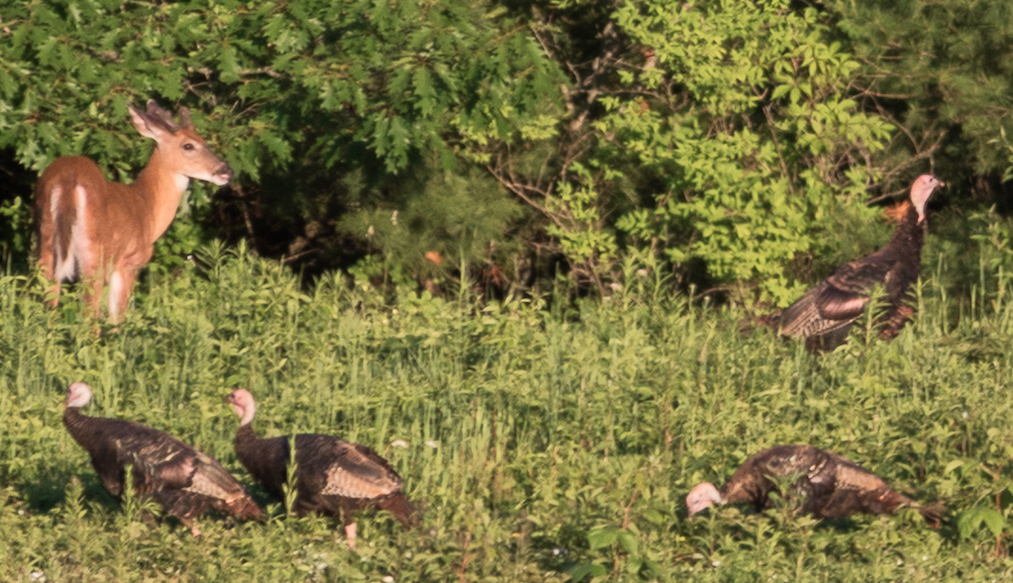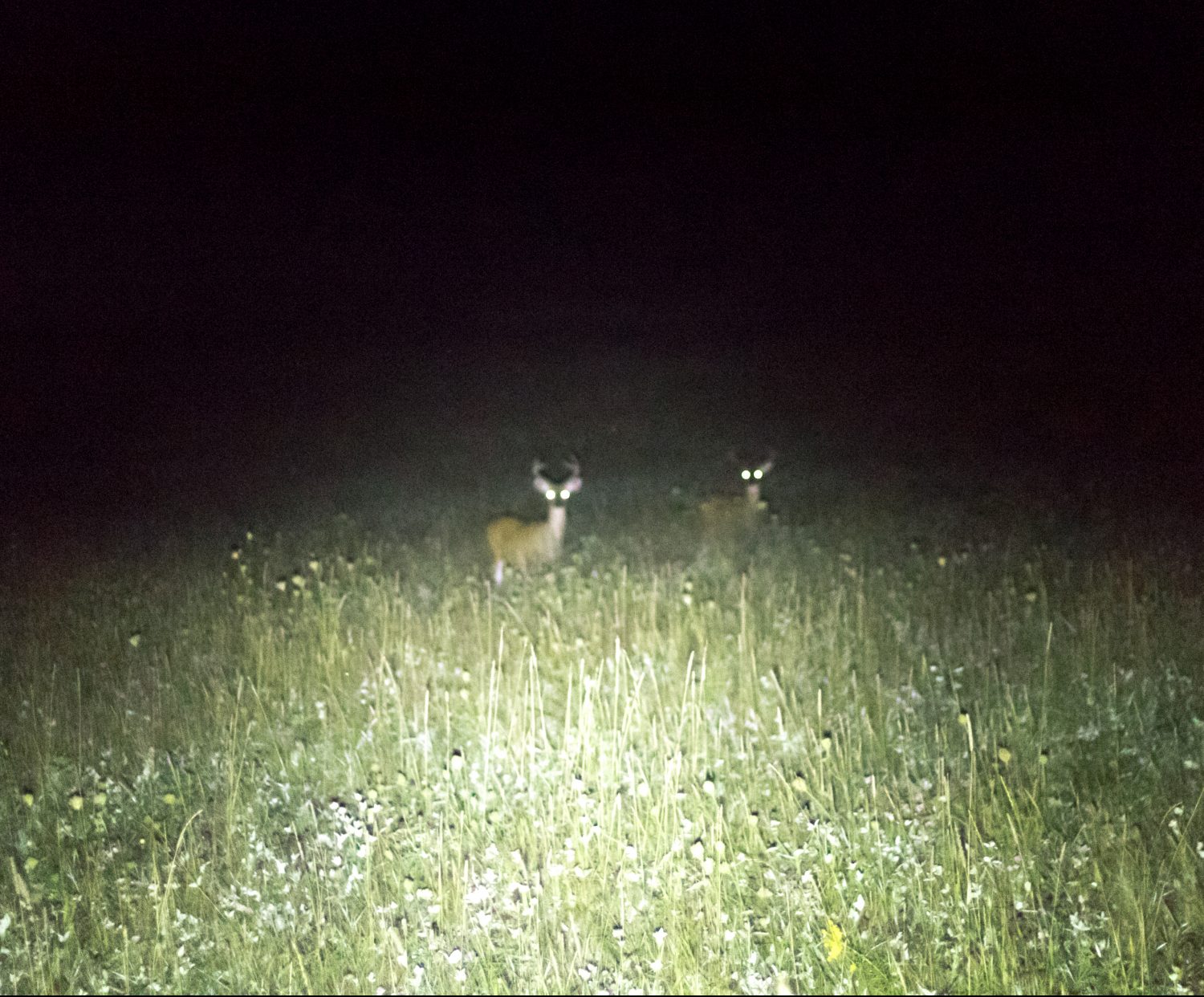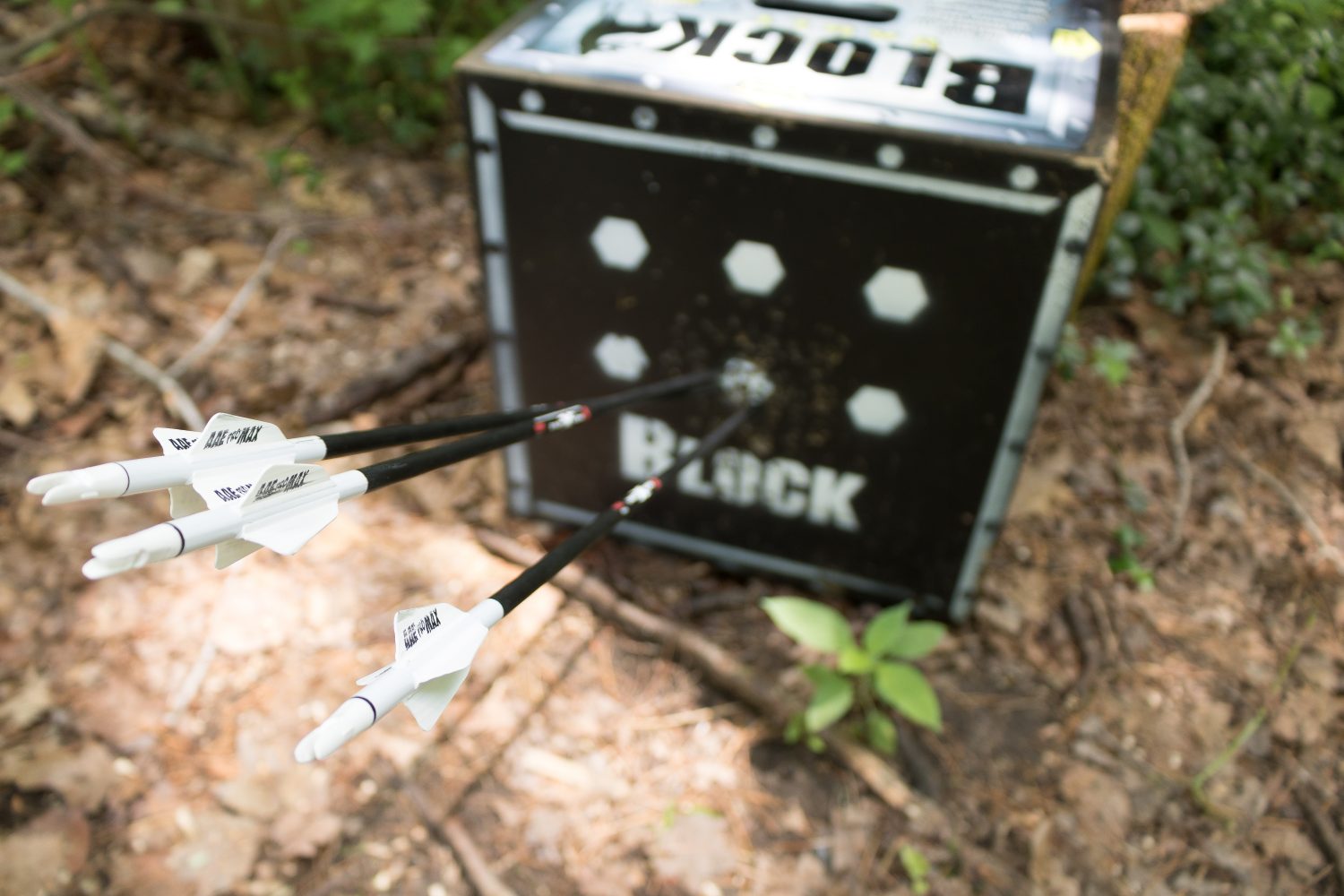This review is specifically for deer trackers who are wondering if the Holosun AEMS would make a good optic for tracking big bucks in snow. I bought the Holosun AEMS because, based on its specs, it seemed like it would be a perfect balance between an open sight and LPVO optic. I’ve tried all different types of scopes/sights for tracking deer on snow, and so far the Holosun AEMS is my favorite. My goal was to have an optic that allowed for faster target acquisition than a peep/open sight, but in a smaller, lighter package than a rifle scope, that also required less maintenance in the field. The AEMS does just that.
What drew me to the Holosun AEMS more than any other red dot or reflex sight is its sacrificial lenses, which are replaceable, see-through glass, and flat. The sacrificial lens covers are flat, and therefore, I hoped that snow, rain, and slush would be easily cleaned off the optic and would require less maintenance while hunting.
Although it’s not perfect, I ended up loving this optic, and I will expand on why I think this sight is so great for trackers in the following paragraphs. This review goes beyond technical specifications, offering an evaluation based on my experience while highlighting the pros and cons of the AEMS for tracking bucks in harsh, snowy conditions.
No Affiliation
I am not affiliated with Holosun in any way. I bought this optic with my own money to out of my own curiosity, which has removed any bias; no external incentives influence this review.
How The Holosun AEMS Was Tested
I tested the Holosun AEMS on my Remington 7600 Carbine for an entire hunting season while tracking big woods bucks on snow in the northwoods of Maine. Tracking conditions push gear to the limit, combining intense physical exertion with cold, harsh weather, making it an excellent test of durability and performance. The new Holosun AEMS X2’s also just came out which are the same footprint basically as the original AEMS with small but beneficial improvements, especially to the glass.
Holosun AEMS Pros For Trackers
Flat Sacrificial Lens Covers Made of Glass
As I briefly alluded to above, one of my favorite aspects of this optic is the flat sacrificial lens covers that protect the optic’s glass. These lens covers have great clarity, so I never take them off. I don’t see the need to; this way, my lenses are always protected from getting scratched. It also helps the elements slide right off so the optic stays clear a higher percentage of the time in inclement weather conditions. I found that rain, snow, pine needles, and other debris would often slide off the glass, keeping the reticle obstruction-free for the most part.
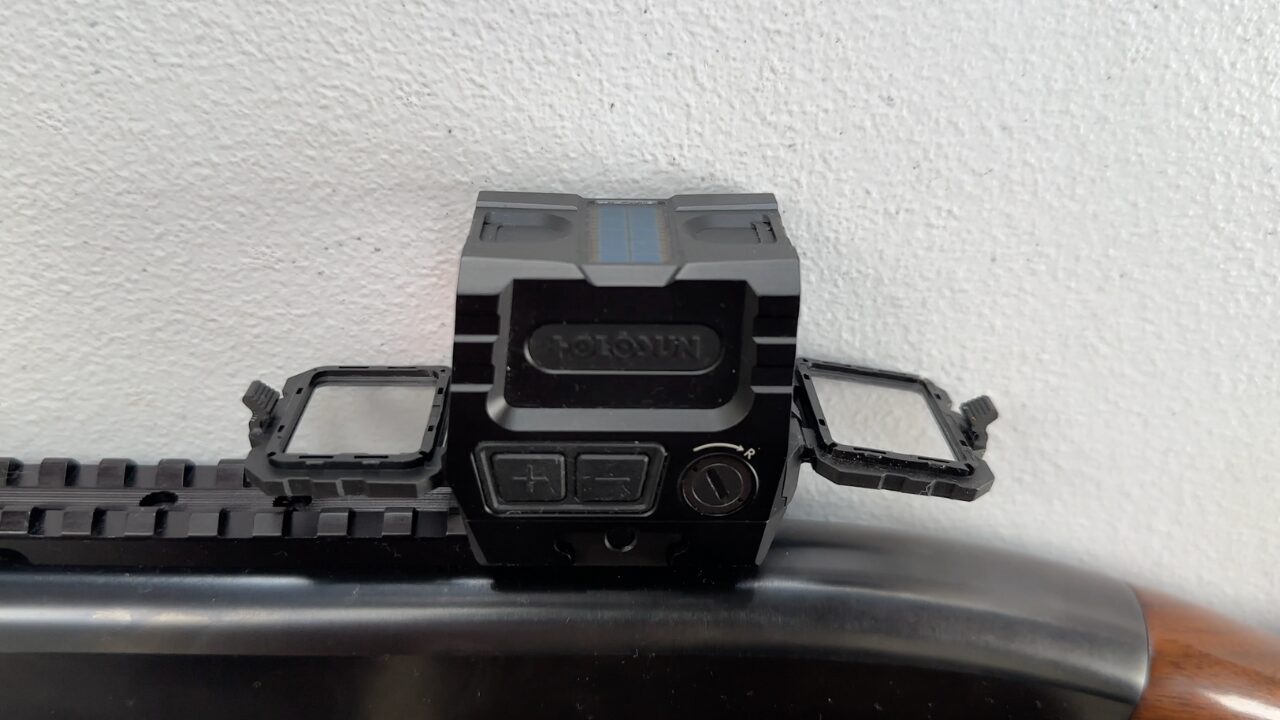
Snow or rain would sometimes cover the glass, but I could brush it off with my hand or glove, and it was ready to go again very quickly. From my experience, regular rifle scopes, peep sights, and buckhorn sights all require more maintenance in these tough weather conditions than the AEMS. With these other sights, I’m always breaking off a twig or using paper towels to clean them, but with this sight, it is much less of an annoyance and I felt like I could focus on hunting more than if I was going to be able to see down my sights when a buck jumps out in front of me.
Height on Receiver
A potentially overlooked pro of this optic is that the AEMS sits high on the gun, it looks a little awkward and a little goofy and your cheek weld isnt as sturdy as a peep sight. However, it was very easy for me to get used to and the benefit of having it higher is that when snow falls on your gun, it doesn’t immediately clog up the optic, like it does when you’re using a peep sight.

Enclosed Emitter
The reason I was able to brush off the elements from the lens covers without affecting the red dot is because the AEMS utilizes an enclosed emitter. This means the light emitter of the red dot is enclosed within the waterproof housing. For this reason, the red dot does not get affected by the elements. Even if there was a little snow or rain on the lens, I could still see the red dot in most cases to make a shot. I recommend an enclosed emitter when hunting in general, but especially if you’re going to be in winter weather conditions.
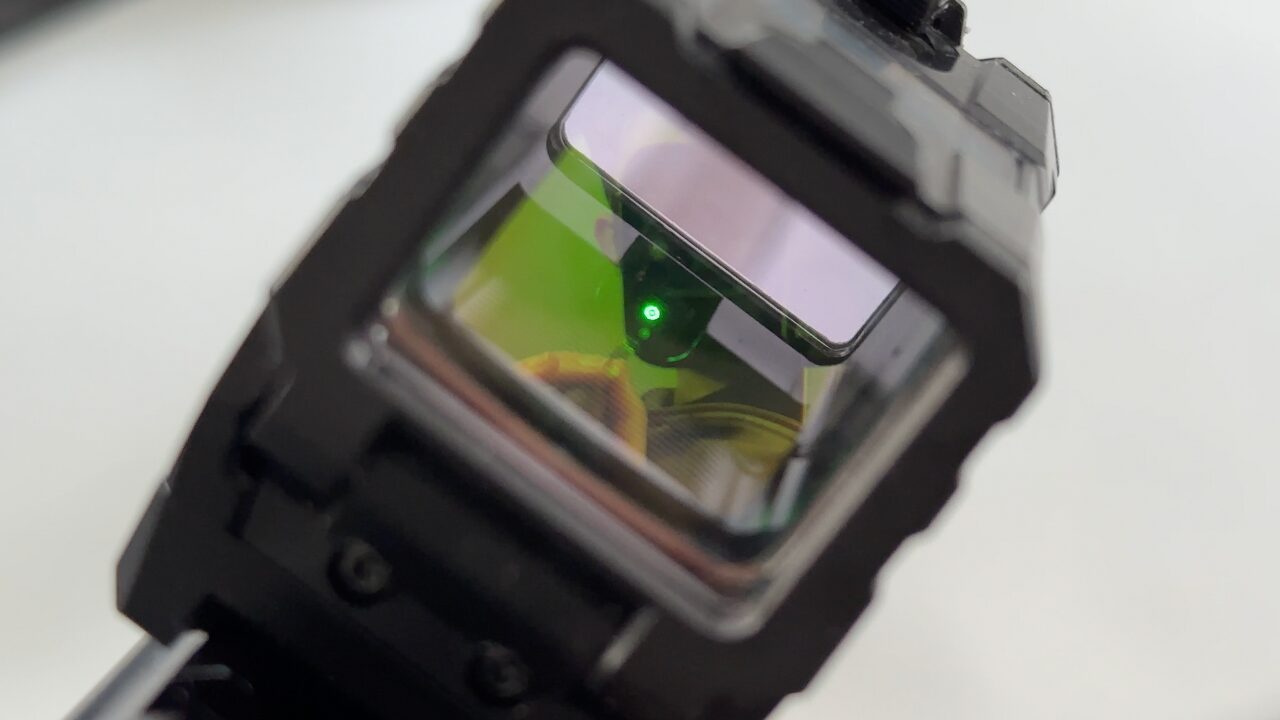
Long Battery Life, Solar Panels, Bright Light
First off, the red dot is very bright, even on a sunny day in the bright reflective snow the dot shows clearly when the brightness is turned up. I’ve always been skeptical of battery-operated optics because electronics can fail in harsh hunting scenarios or run out of battery at the worst times. However, the AEMS did put my mind at ease by giving it a battery life of up to 50,000 hours when using a CR2032 battery at mid-range brightness settings. This means it should last about 3-5 years on a single battery, depending on brightness level, shake-awake technology, and solar panels.
In my experience, I just manually adjusted the brightness on the AMES based on the weather conditions of that day. I often had it quite bright so that I could see the dot against the white snow, but even then, I never needed the AEMS at full brightness. For me, it’s easier to just plan on replacing the battery every year than to worry about the fancy shake-awake and solar panels; this way, I know the battery won’t die on me.
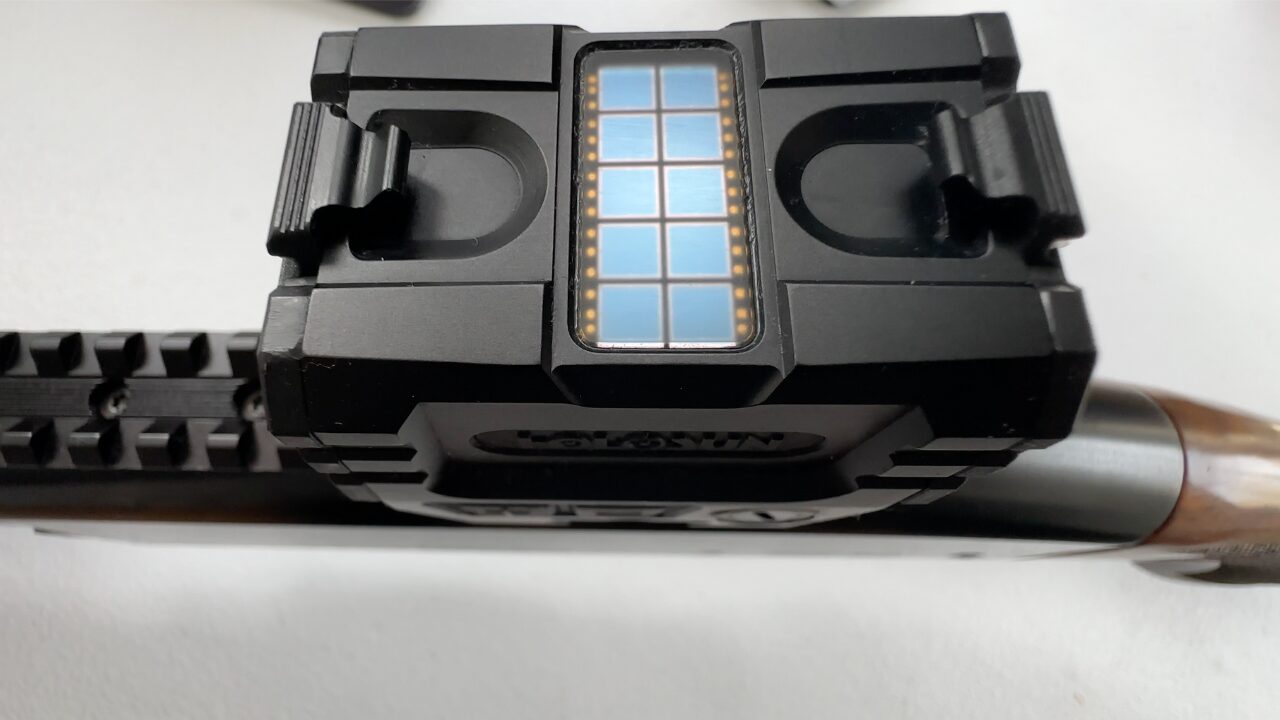
Scope Box, Reticle Options, Fast Acquisition
There are 3 reticle options to choose from; red dot, circle, or both. I used all of the reticles but I kept coming back to the red dot. The other reticle options seem to take up too much room in the optic housing for me.
When it comes to quick-shooting, the red dot was advantageous over iron sights because you only need to put one thing onto your target vs two things when you’re using iron sights. This makes target acquisition much faster in my opinion which is perfect for tracking deer since shots are almost always quick.
Interestingly, after I bought the AEMS, a new version of the AEMS came out which has a much bigger scope box. It’s called the Ronin AEMS Max. If you’re on the fence with the AMES because of its small size then the Max could be a good option for you. However, I will say I was first skeptical of the AEMS because I thought it was going to be too small, but I ended up really liking the size. I mounted the AEMS as close to my eye as I could because that gave me a bigger perceived scope box, and that seemed to do the trick.
That said, I am interested in getting my hands on the Ronin AEMS Max to compare the two to see what I like better.
Overall Usability and Feel
The Holosun AEMS was easy to sight in, it’s the same as sighting in a rifle scope. There are windage and elevation adjustment screws.
It’s also much smaller and lighter than a rifle scope, but it is a little bigger than iron sights. It only weighs 3.9 oz. The additional weight vs iron sights is well worth the benefits of the red dot to have that faster acquisition. It is also much lighter and less bulky than a rifle scope, making it great for tracking where I’m carrying my rifle for +/- 7 miles per day. It makes it easier to get through the brush because of the reduced bulk and it’s easier to carry on those long days tracking when you’re walking +/- 7 miles per day, every extra reduction in weight helps when carrying a gun that far.
Rifle Pros Summary In Bullet Points
- Flat Glass Lens Covers
- Enclosed Emitter
- Bright Dot, Long Battery Life, Solar Panels
- Scope Box, Reticle Options, Fast Acquisition
- Easy to Sight In
- Size and Weight
Holosun AEMS Cons For Trackers
Although there is a lot to like about the AEMS, there are some considerations to be aware of.
For me, the AEMS is an excellent size if you’re using the red dot reticle. In my opinion, the other two reticles (circle & red dot with circle) are too crowded in the optic for the smaller housing. For me, I don’t see a hunting situation where the red dot isn’t the best option.
I also wasn’t super impressed with the auto-brightness in hunting situations. It could have been a little brighter. It’s not bad, just not as bright as I’d hope when on the auto-brightness setting. This isn’t a deal-breaker, though, as I just manually adjust the brightness, and that works just fine.
I also wish there were a way to mount this sight lower to the receiver. One of biggest cons of the AMES is that it seems to be designed for AR-style rifles. Because of this the mount that comes with the sight sits very high on my Remington 7600 receiver and feels unnatural. Holosun makes a “low mount”, which is not the easiest to find online, and it is easy to buy the wrong mount. To avoid purchasing the wrong mount, I messaged Holosun directly to see if they could help find one that would fit my AEMS. Holosun sent me an Amazon link to the correct mount. If i’m being nitpicky, I would like to have the AEMS sit even lower to the receiver so I could have a better cheek weld, but I can’t complain too much because it still works great.
Rifle Cons Summary
- Not a lot of Scope Box room if not using the red dot feature
- Auto brightness is slightly too dim
- High out-of-the-Box mount
Final Verdict
I’m very particular about the gear I use when hunting and am a stickler when it comes to gear performance, I guess that’s my nature as a gear reviewer. The Holosun AEMS exceeded my expectations because it does what it promises in tough situations. I plan to keep the AEMS on my rifle for this upcoming tracking season, and may purchase a second one to put on my turkey hunting shotgun permanently.
I also really like the idea of the Ronin AEMS Max and would like to get my hands on one to compare it to the AEMS. The extra field of view with the AEMS Max could improve fast acquisition despite the larger optic surface area.
If you liked this reivew and want to see how the AMES performed on my turkey hunting shotgun you can check out my non-tracking-specific review here, although a lot of the information is the same as in this review.



